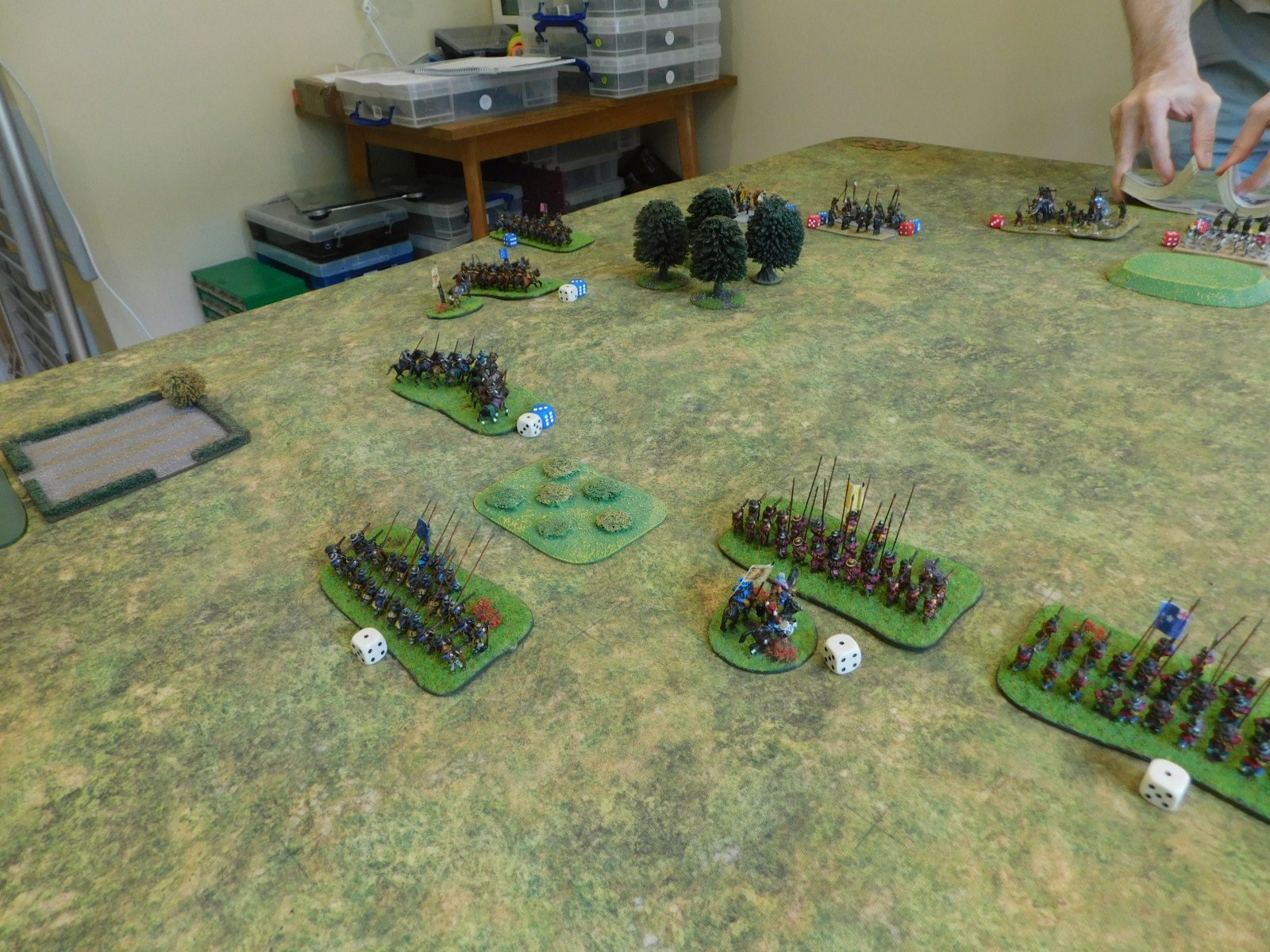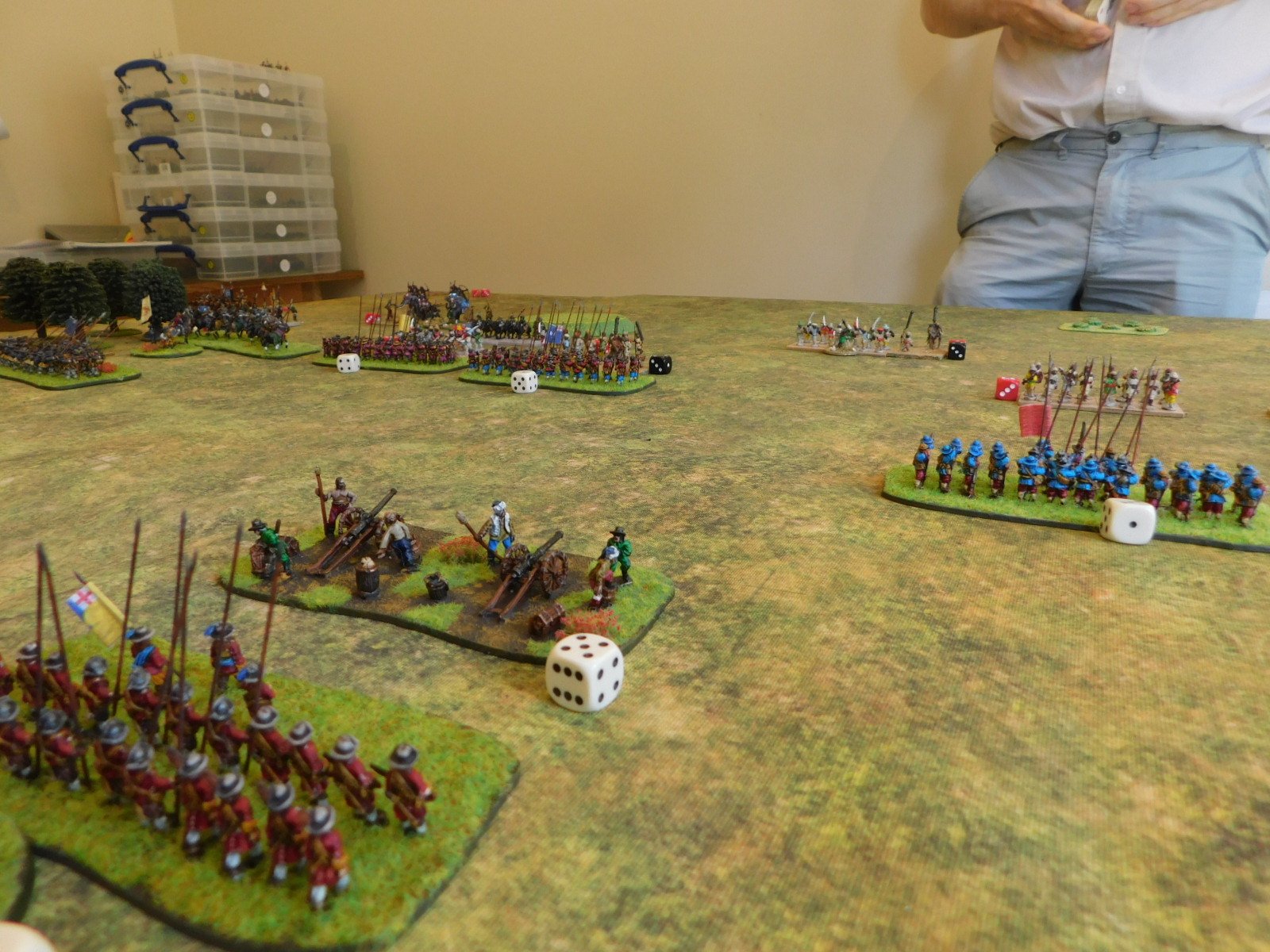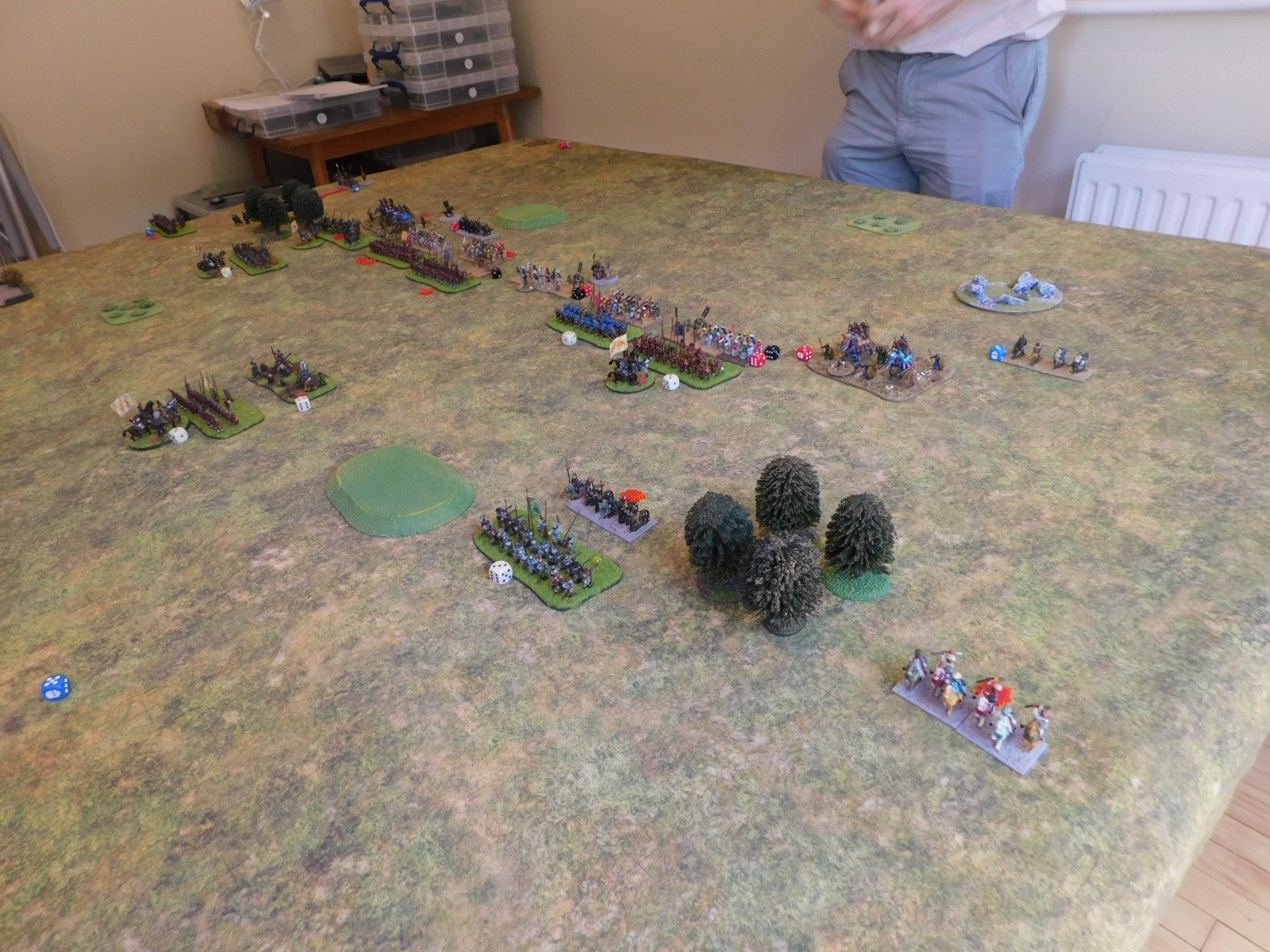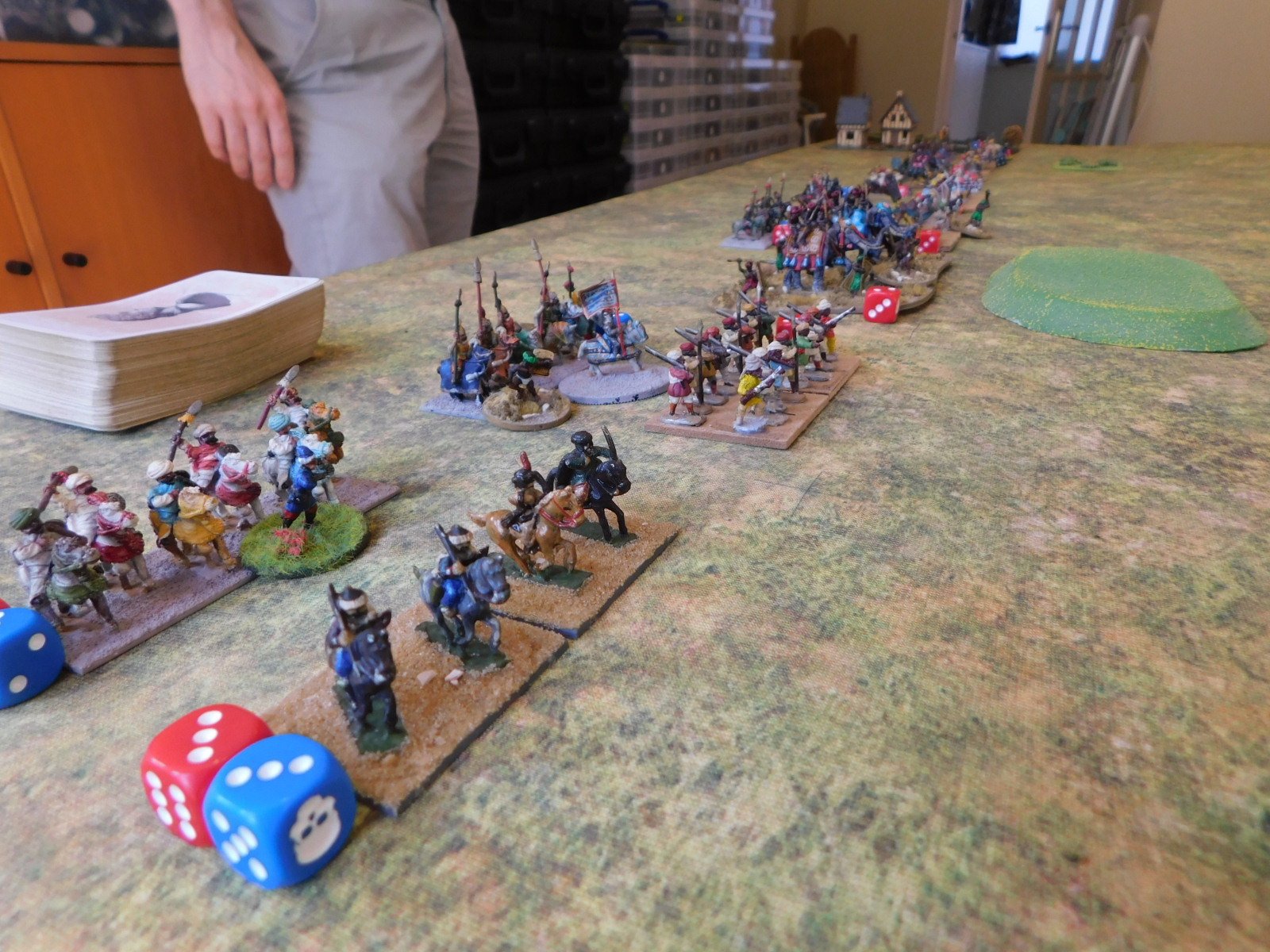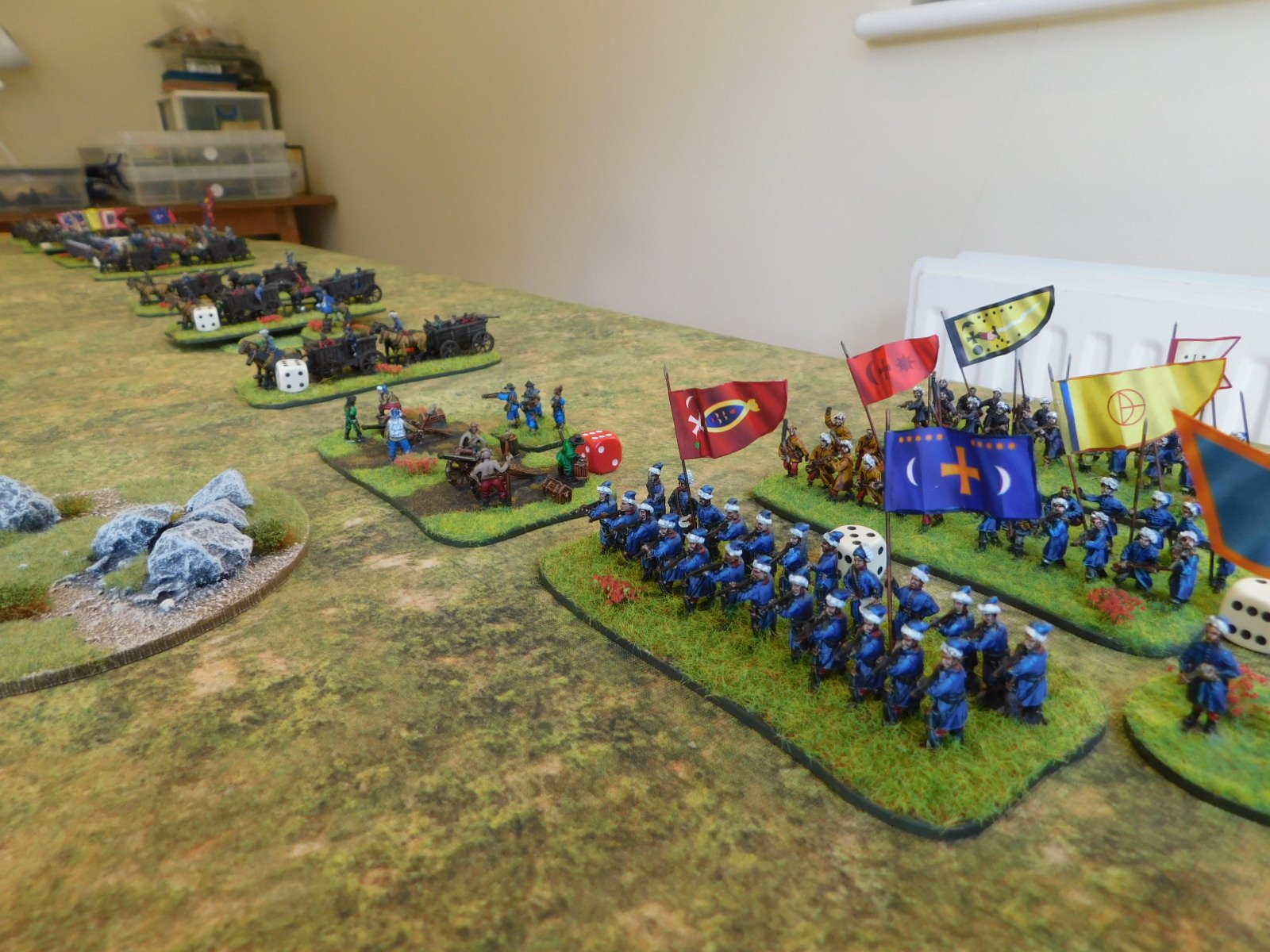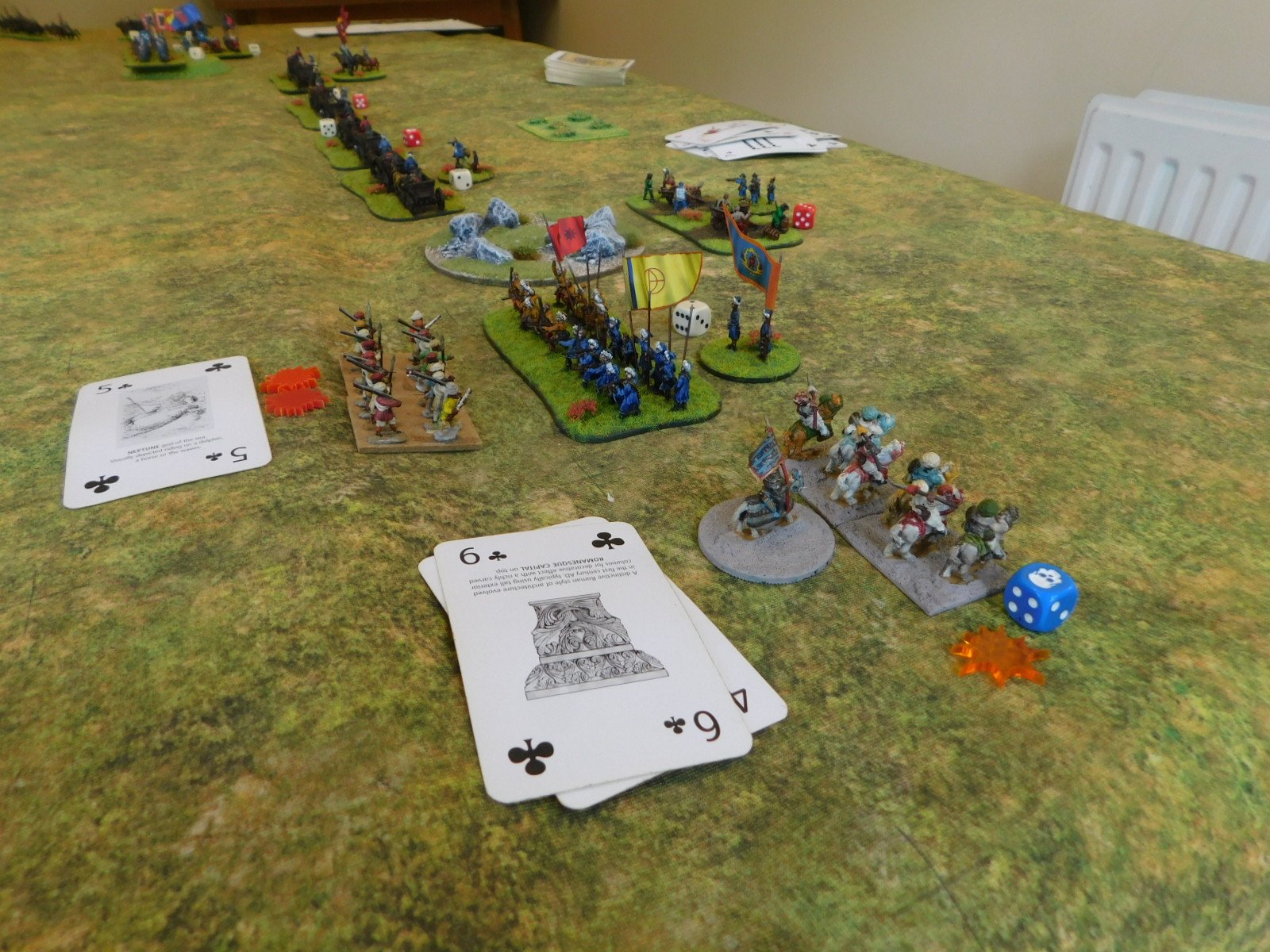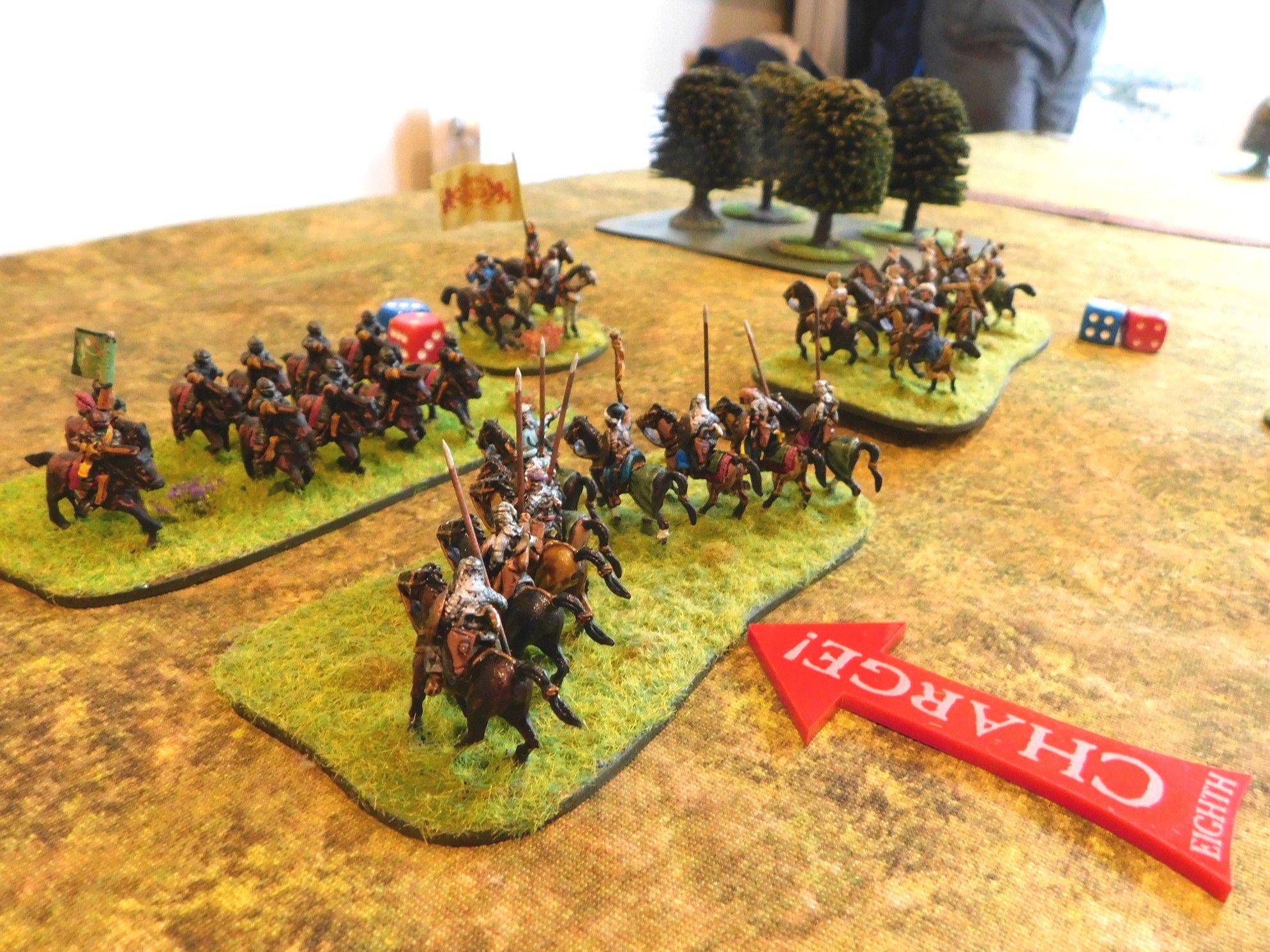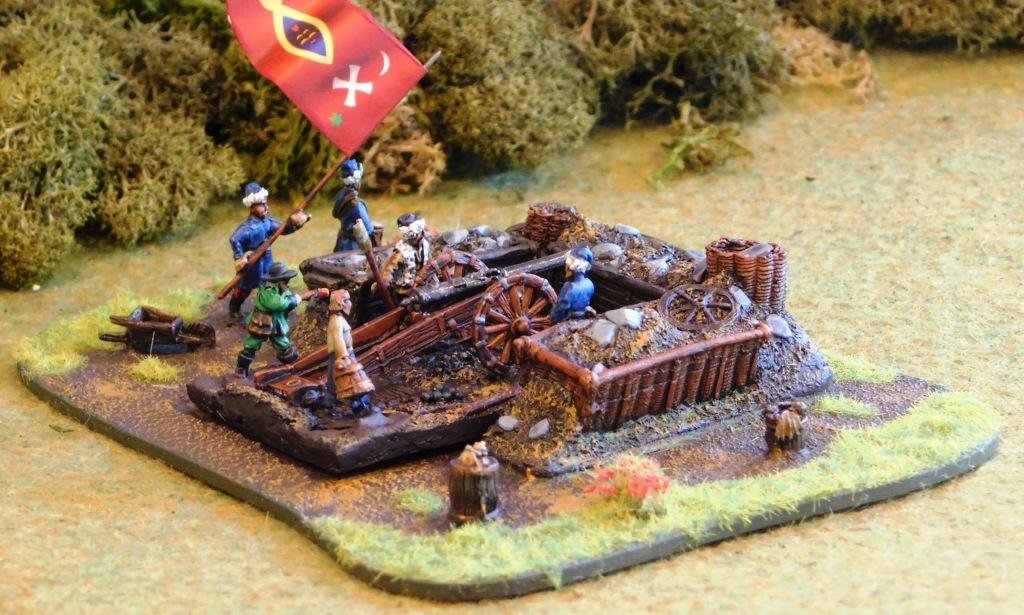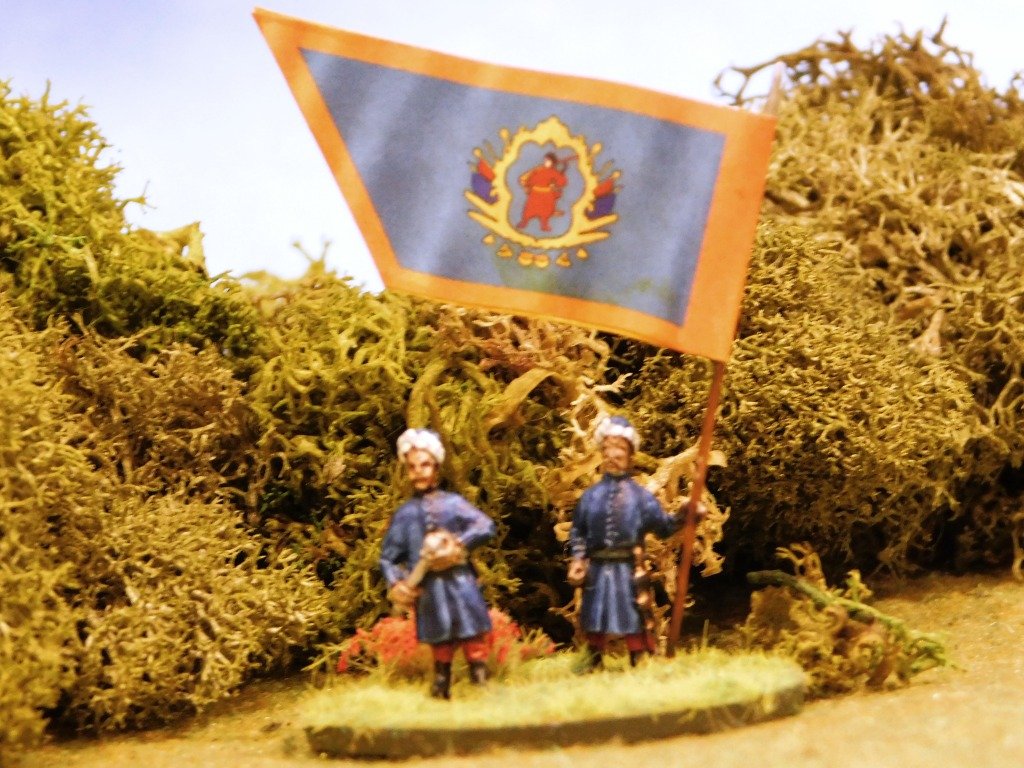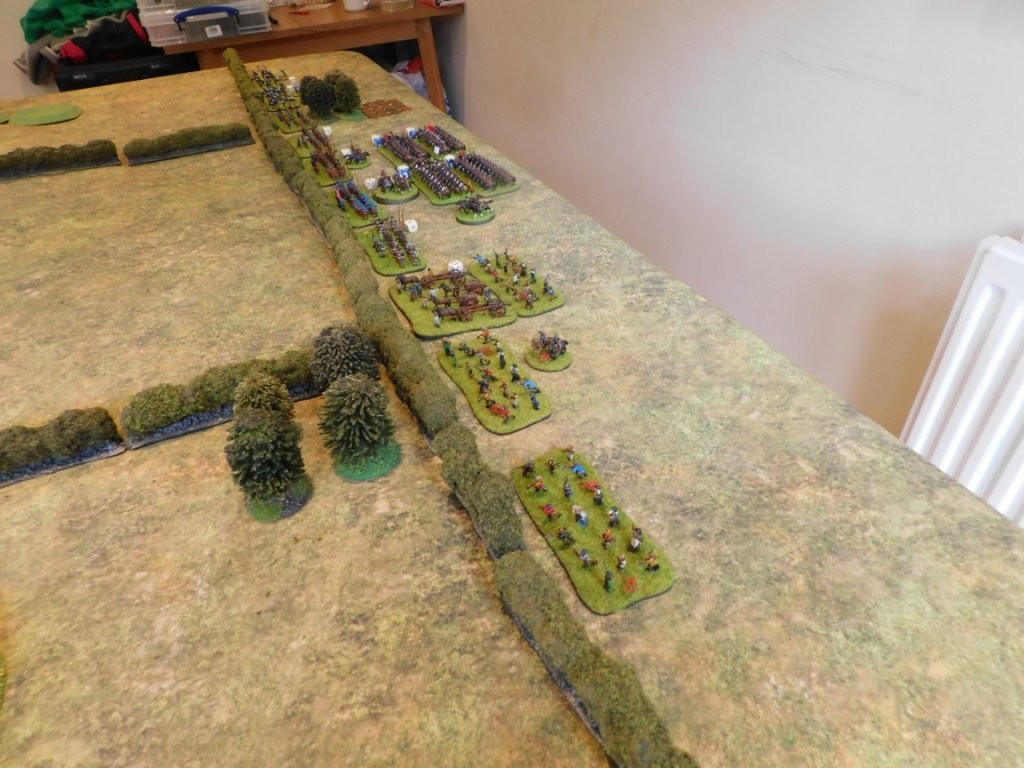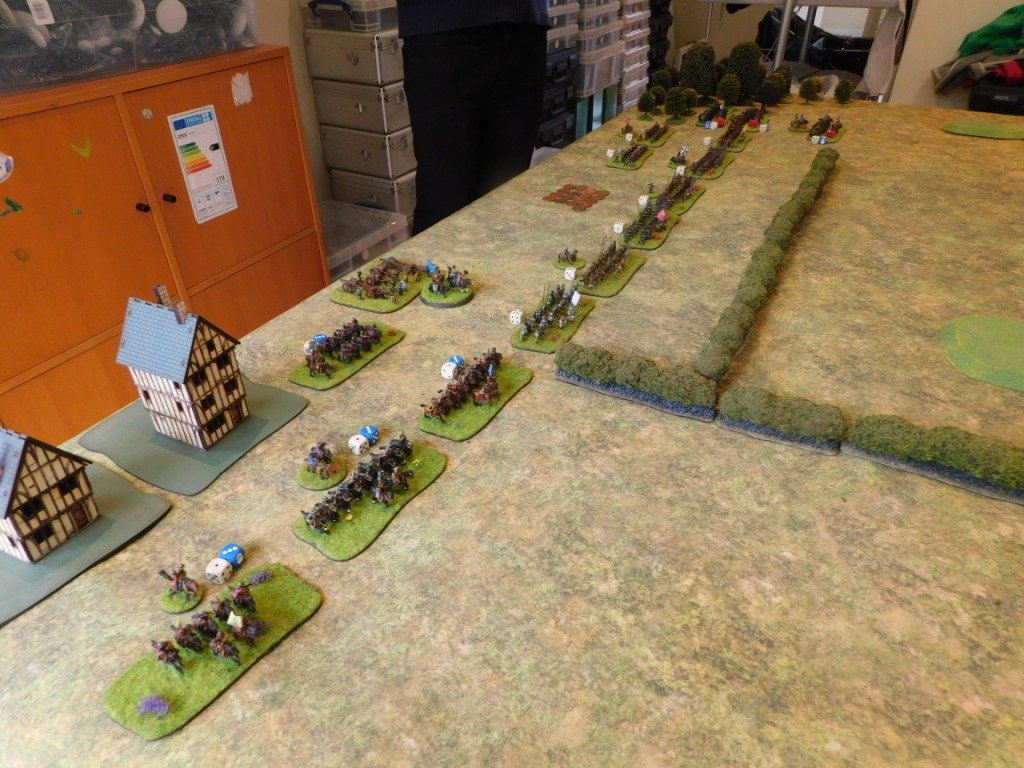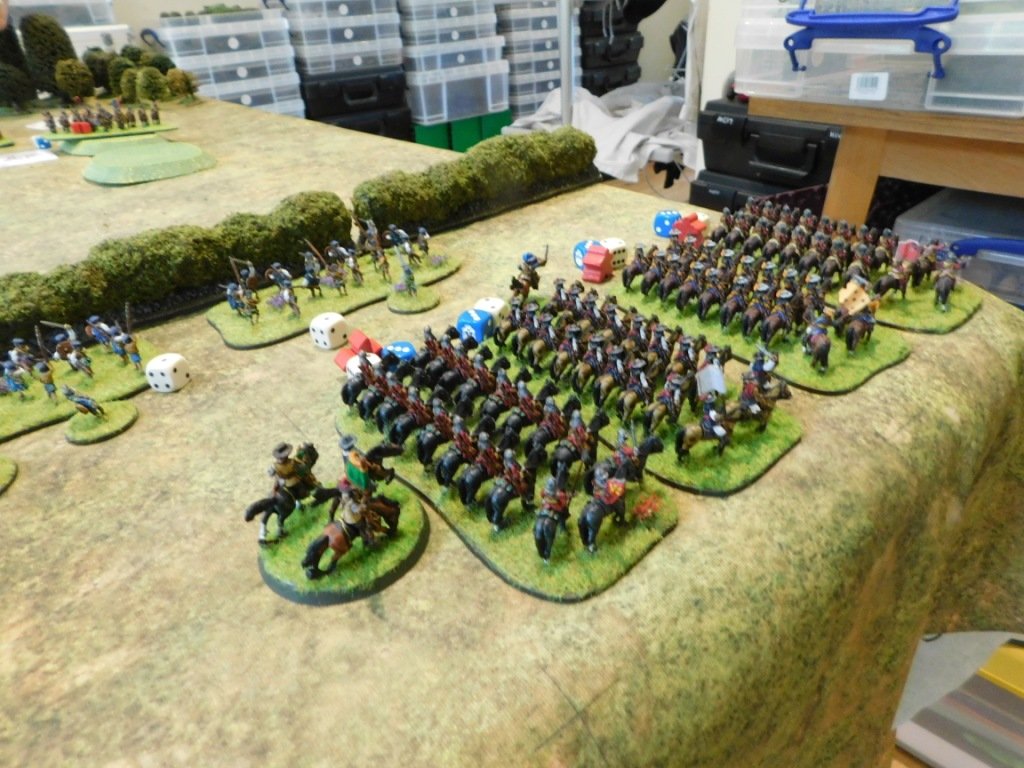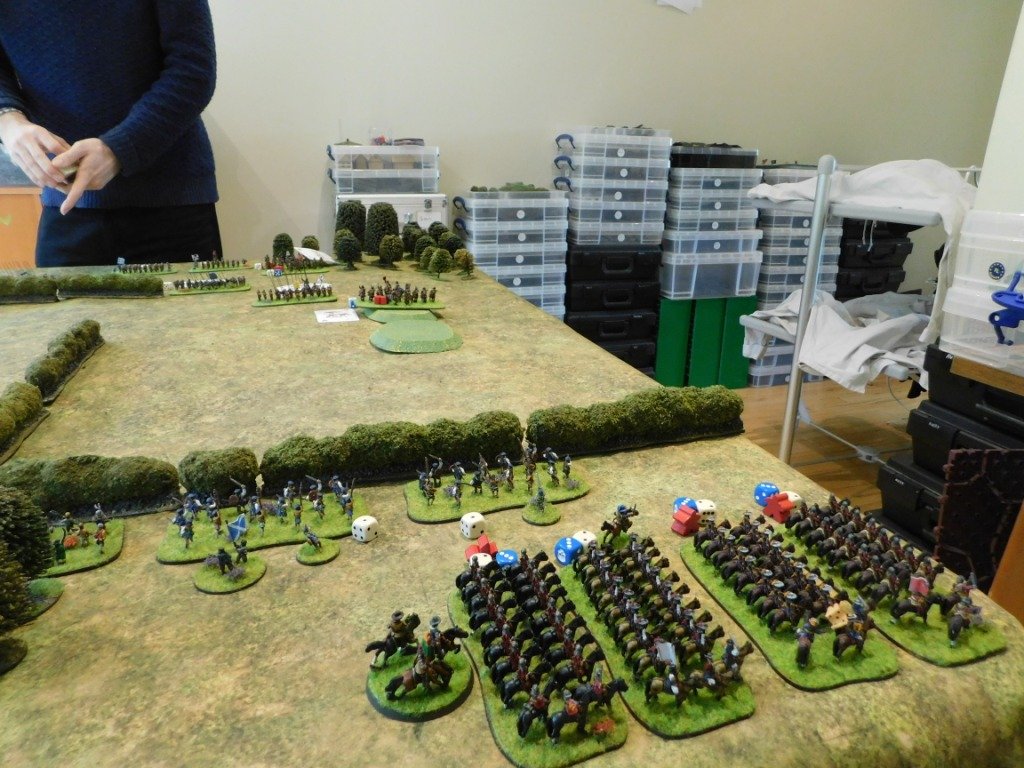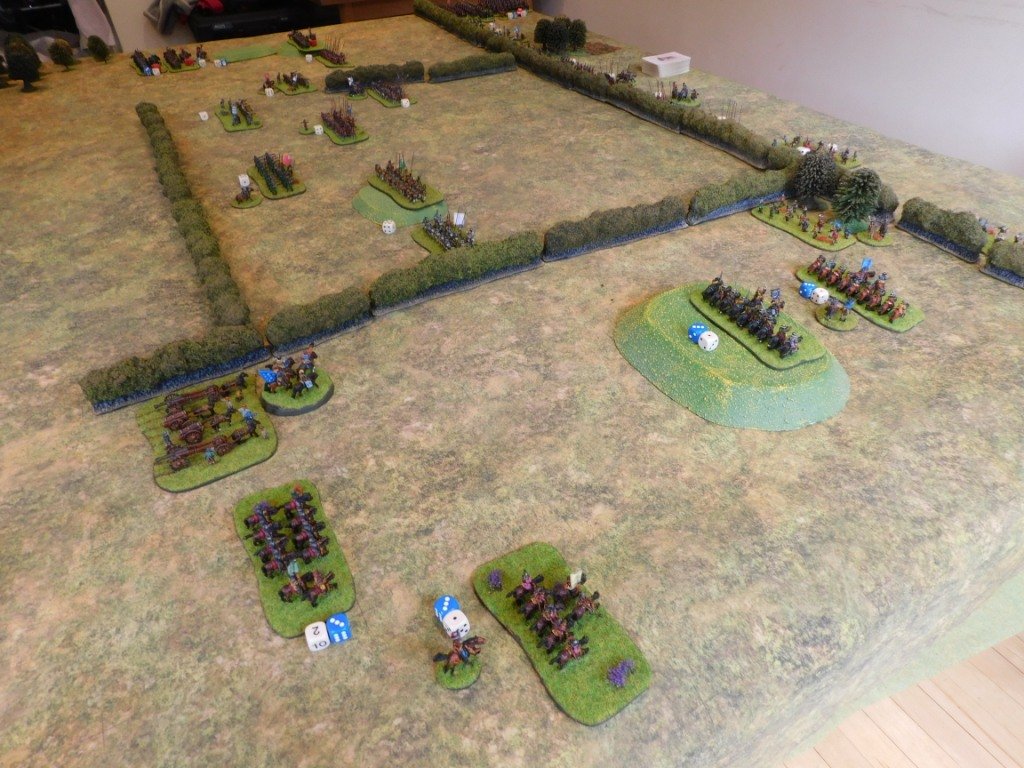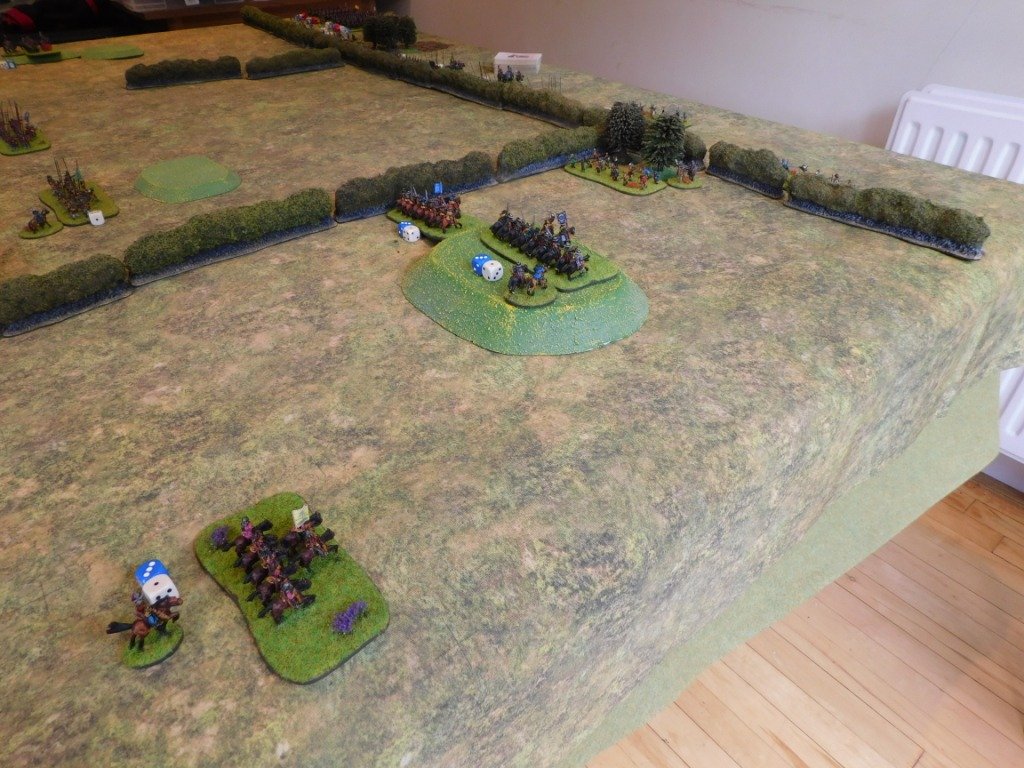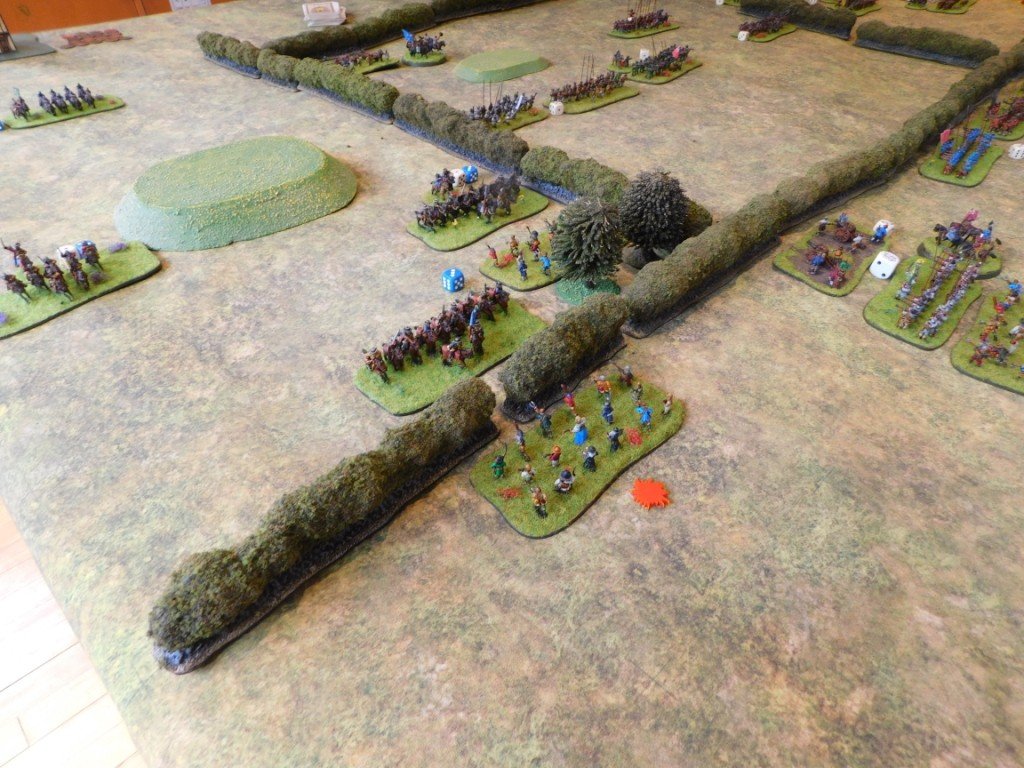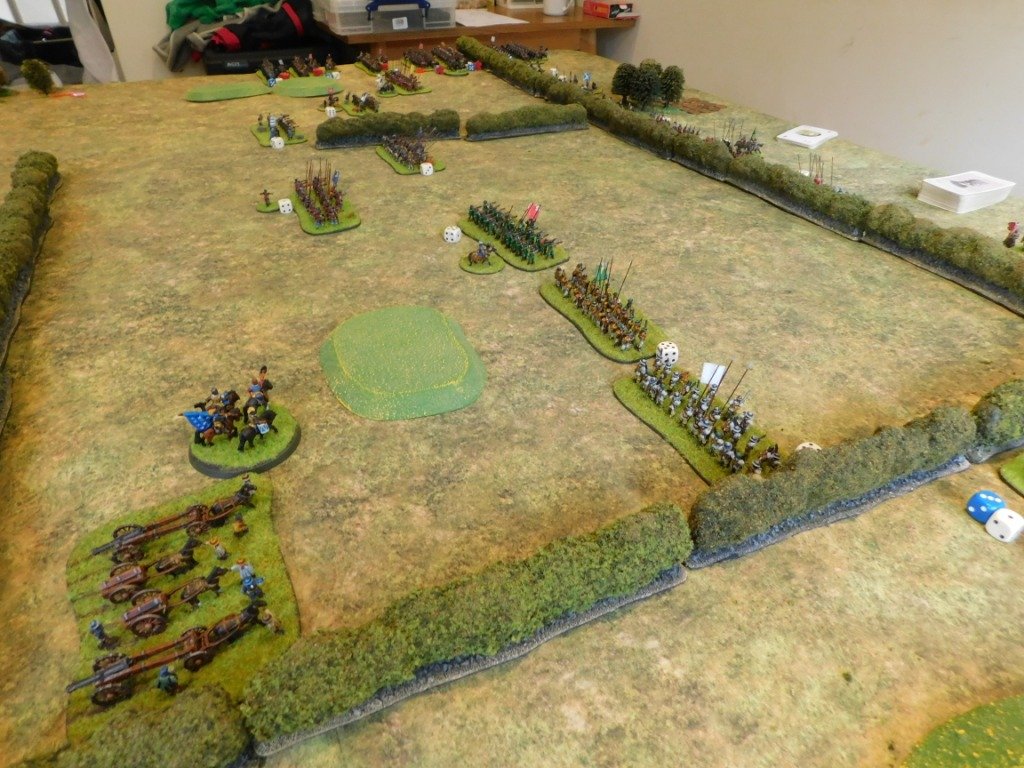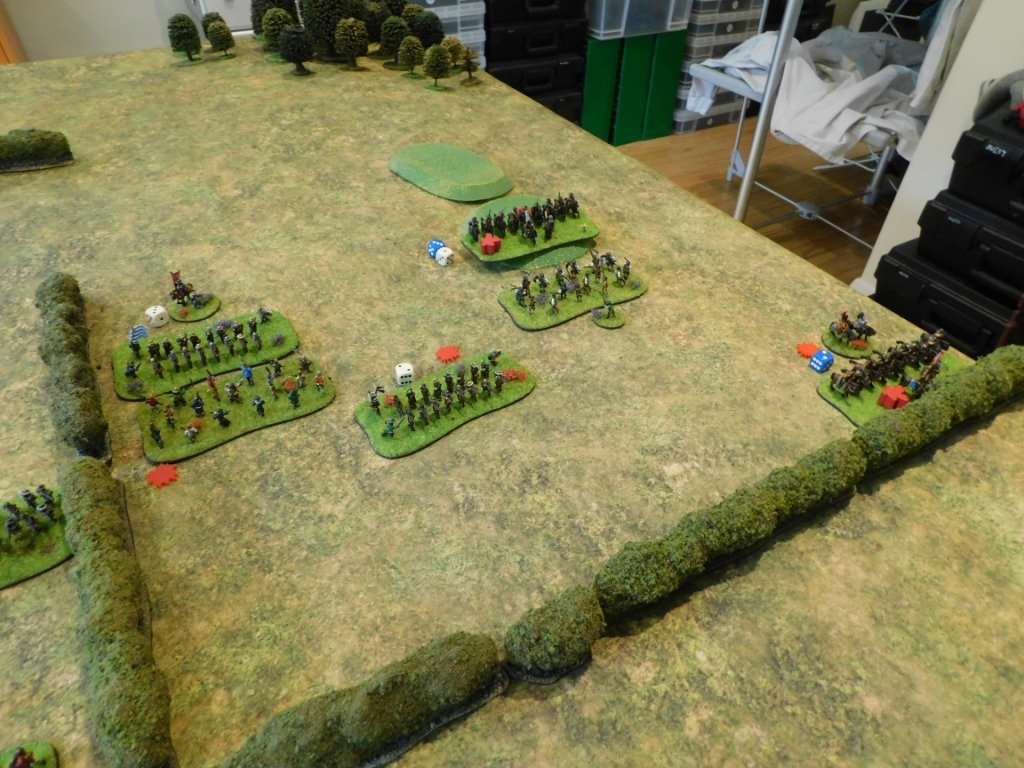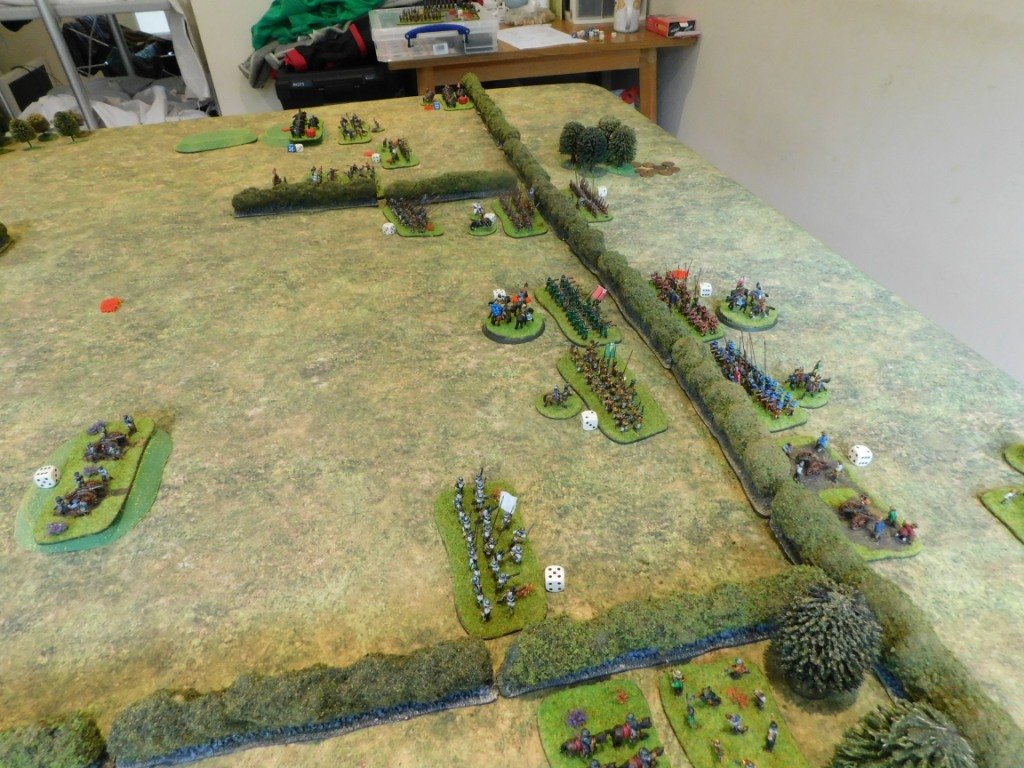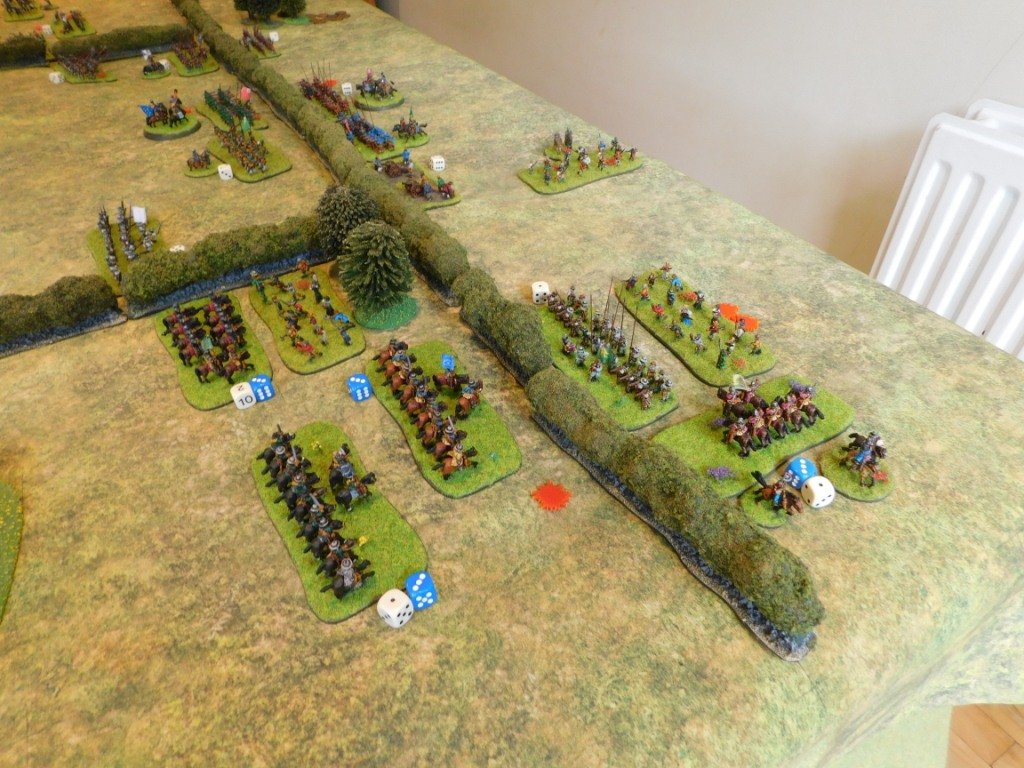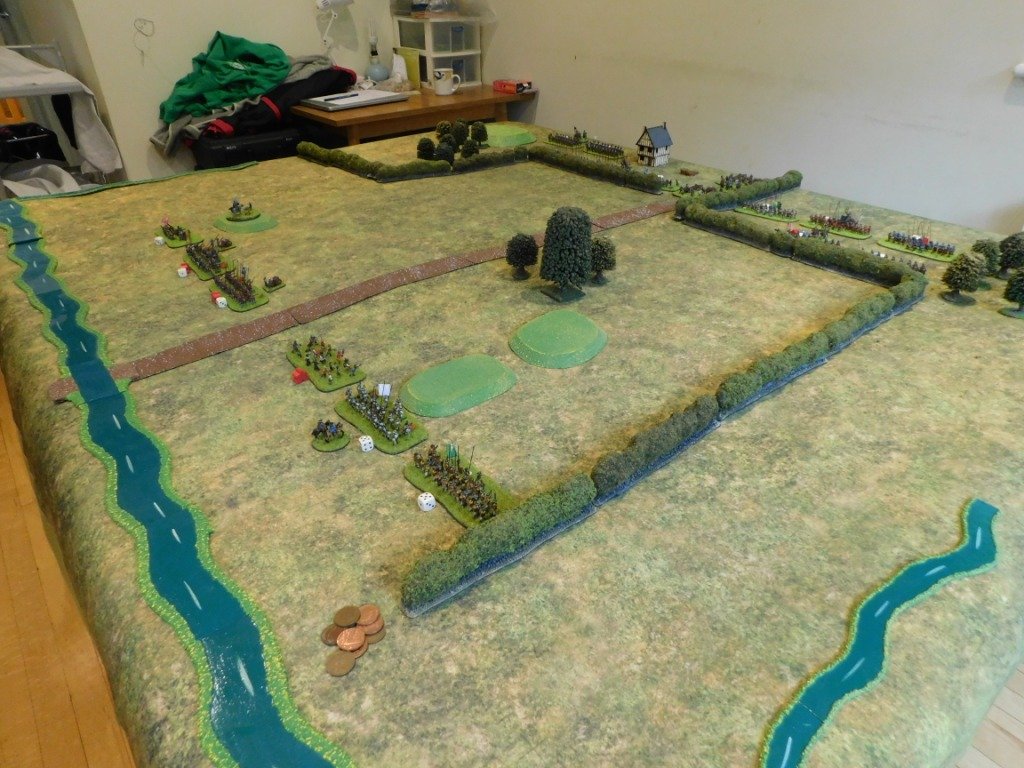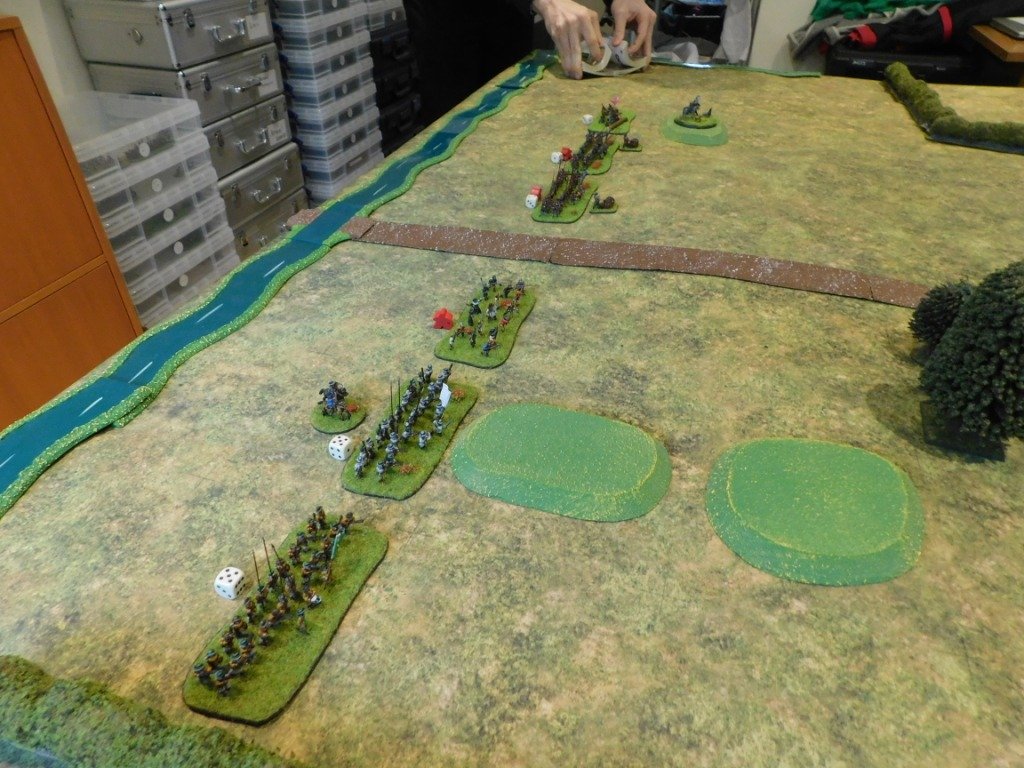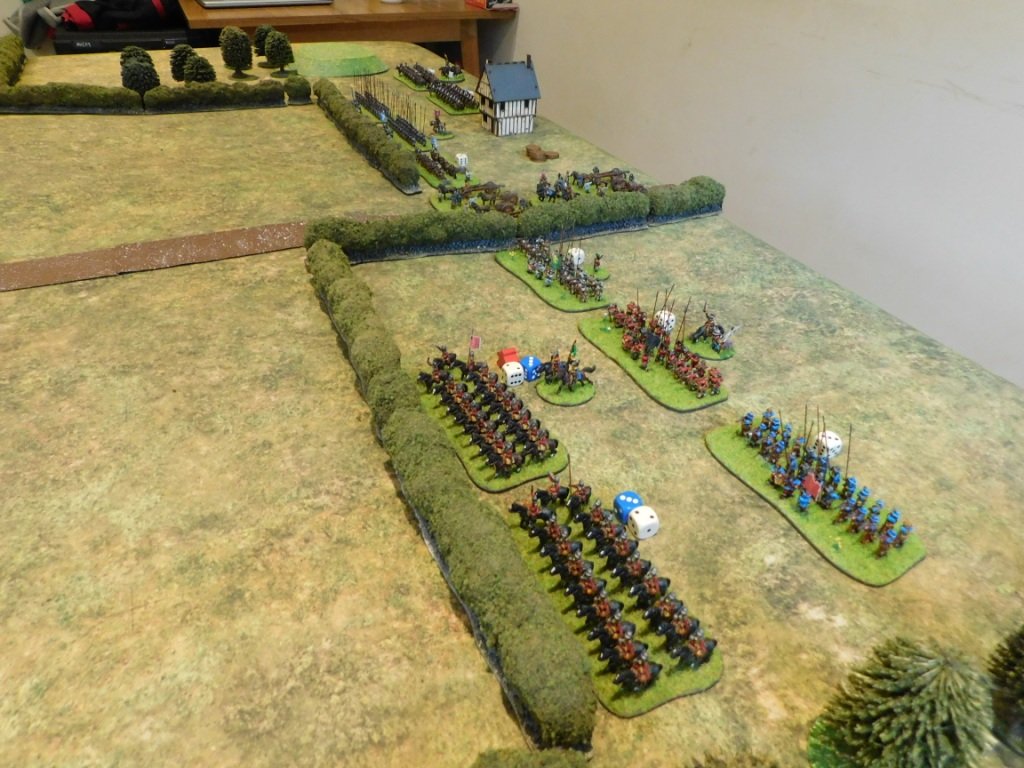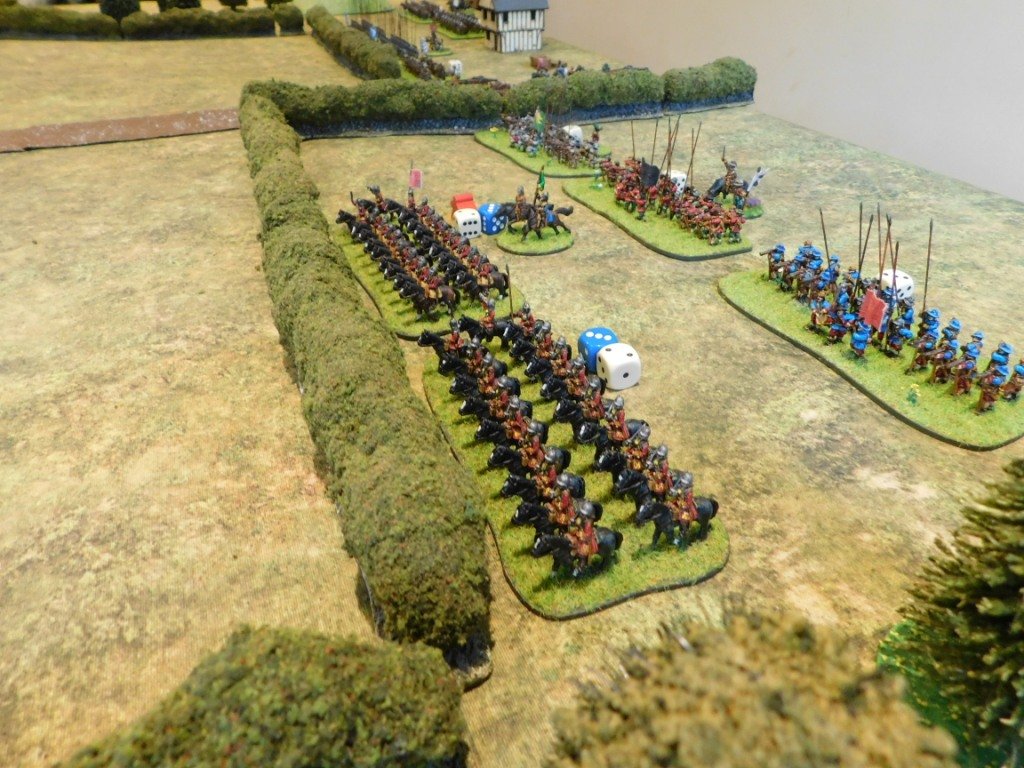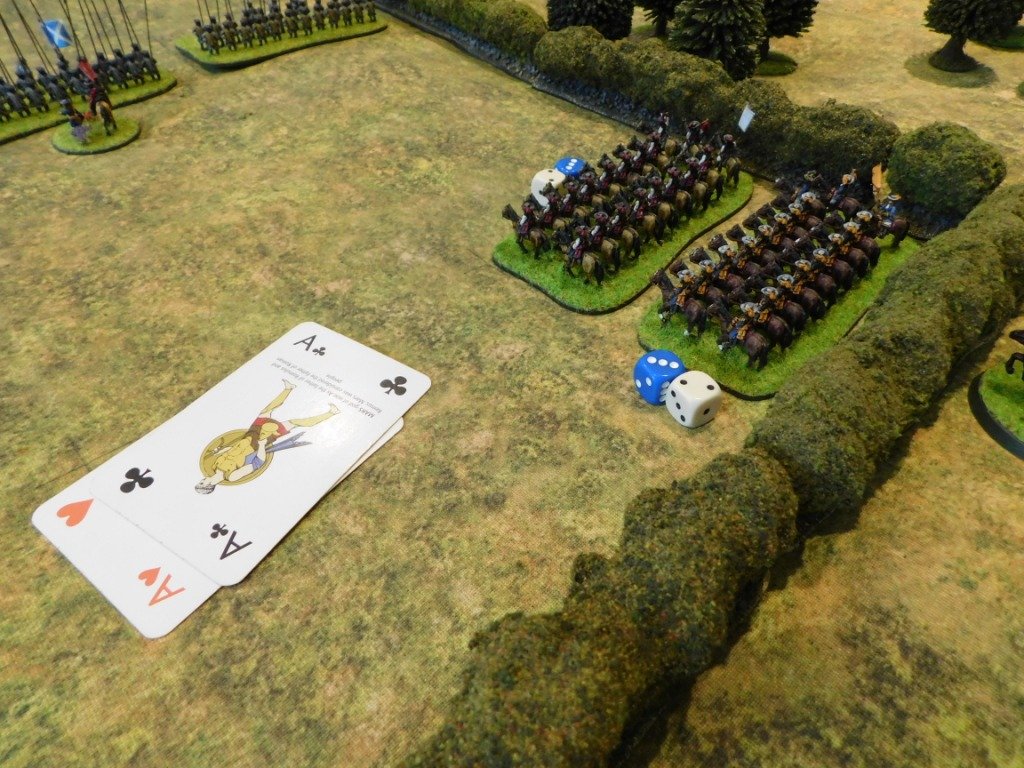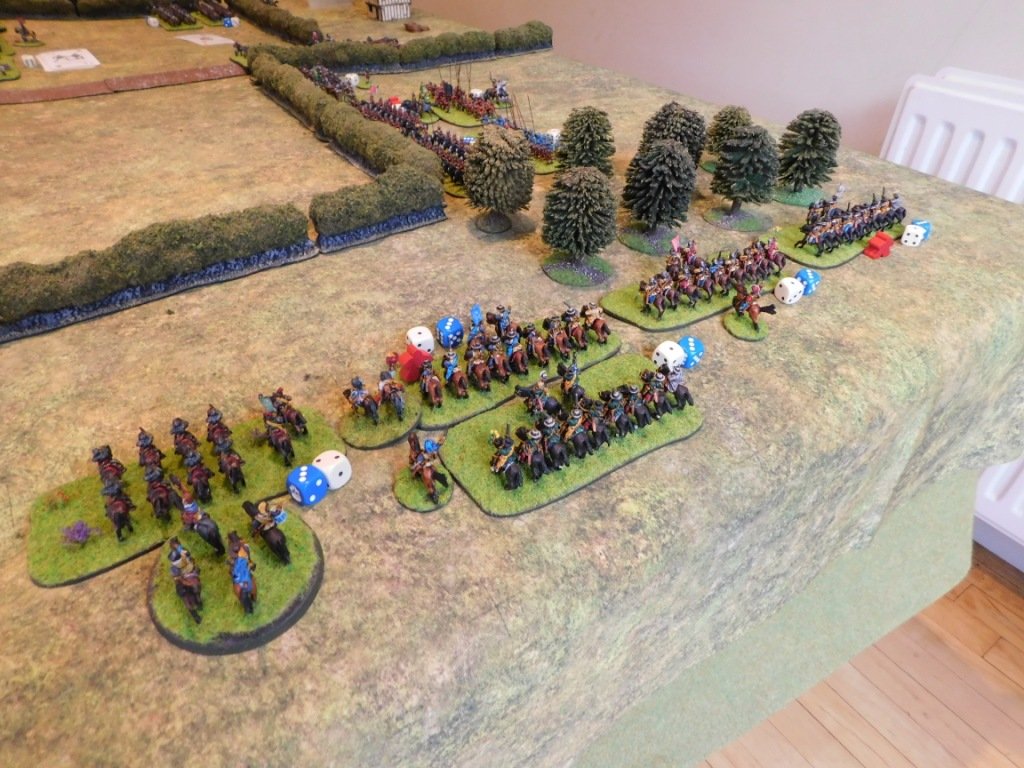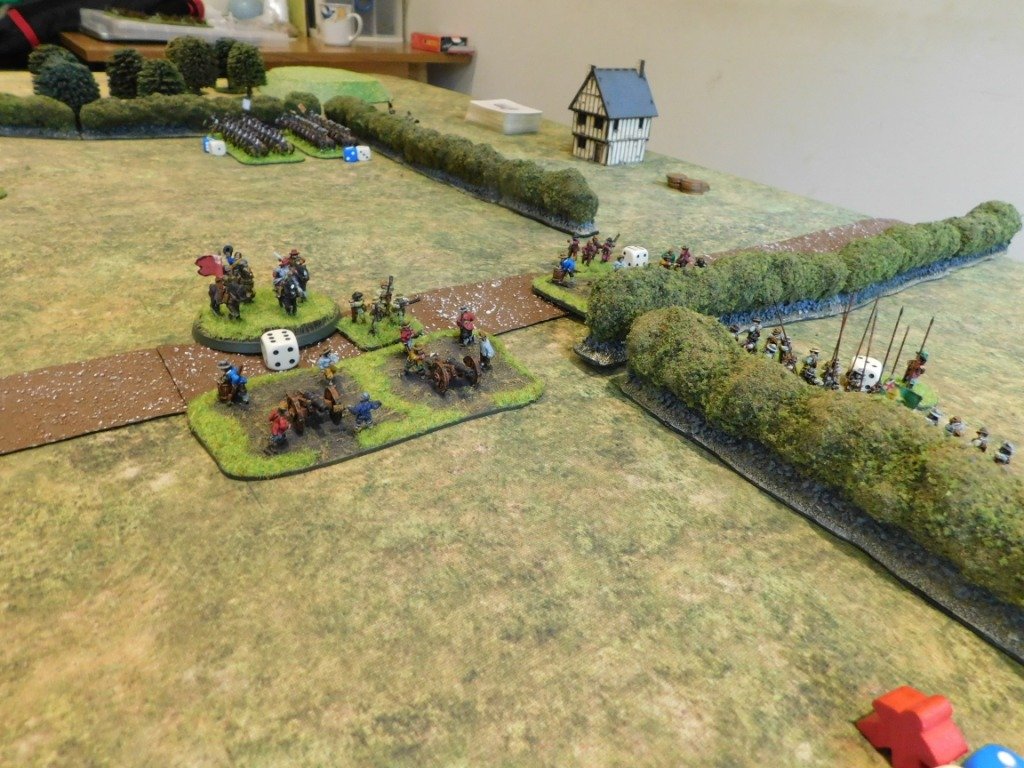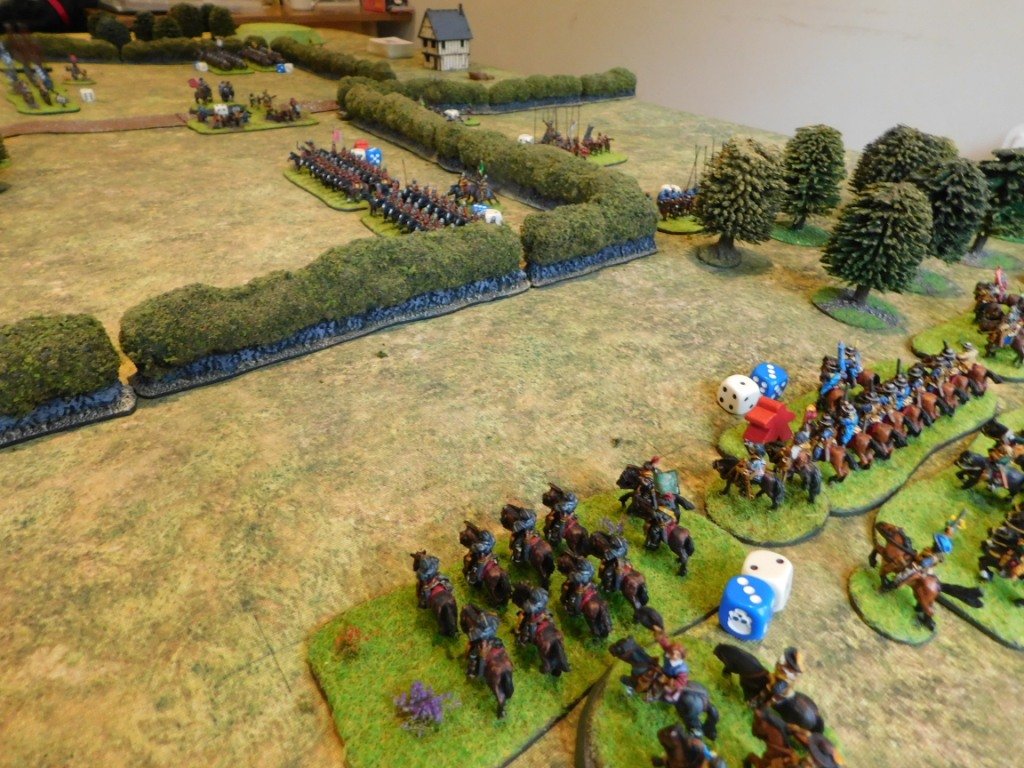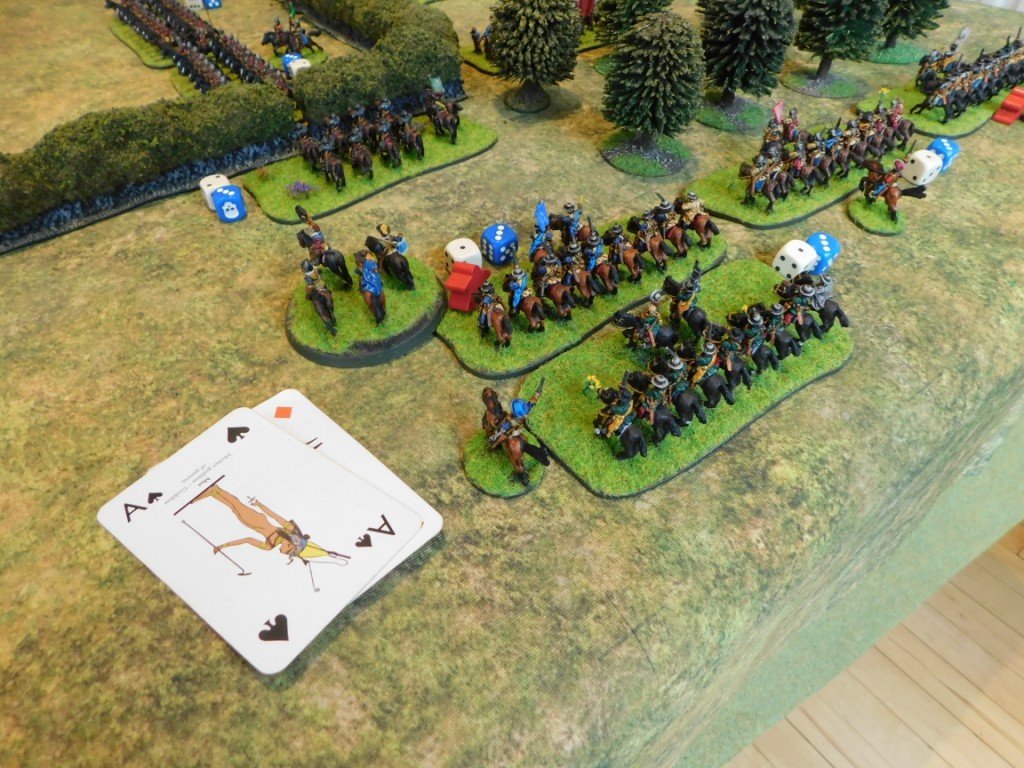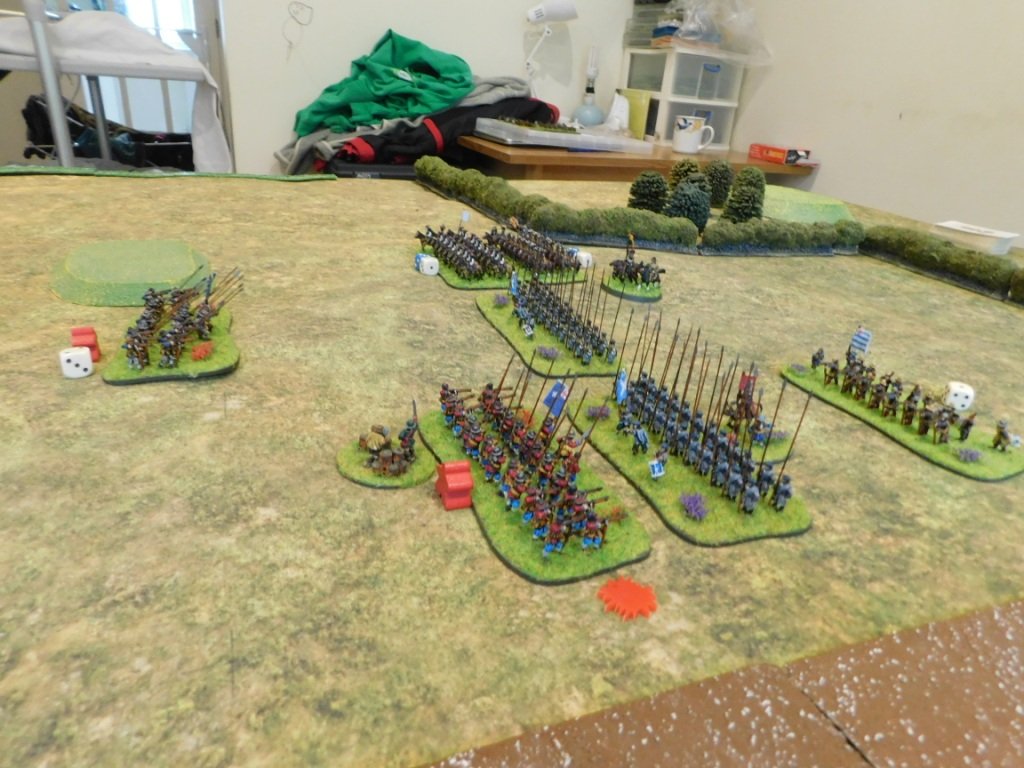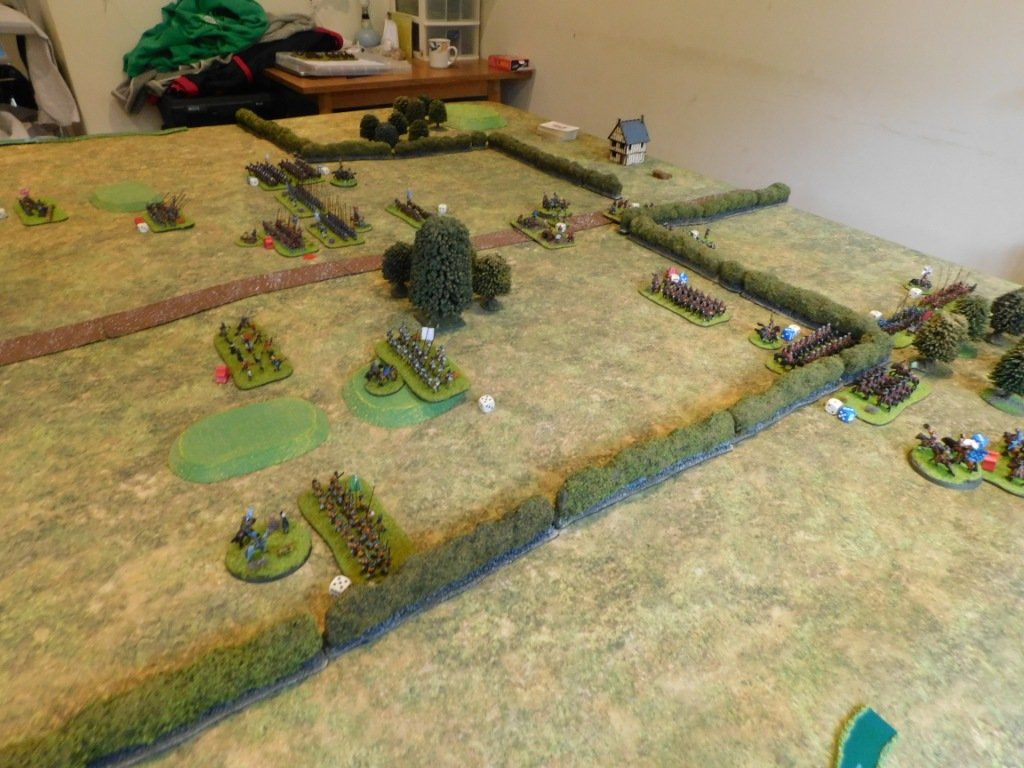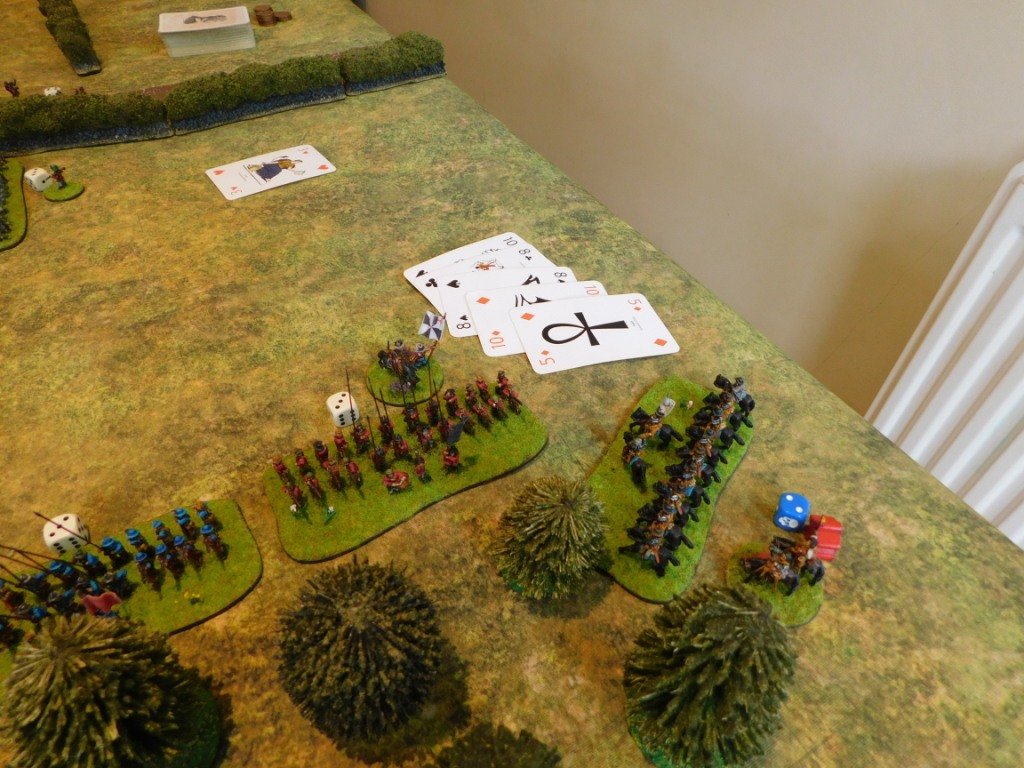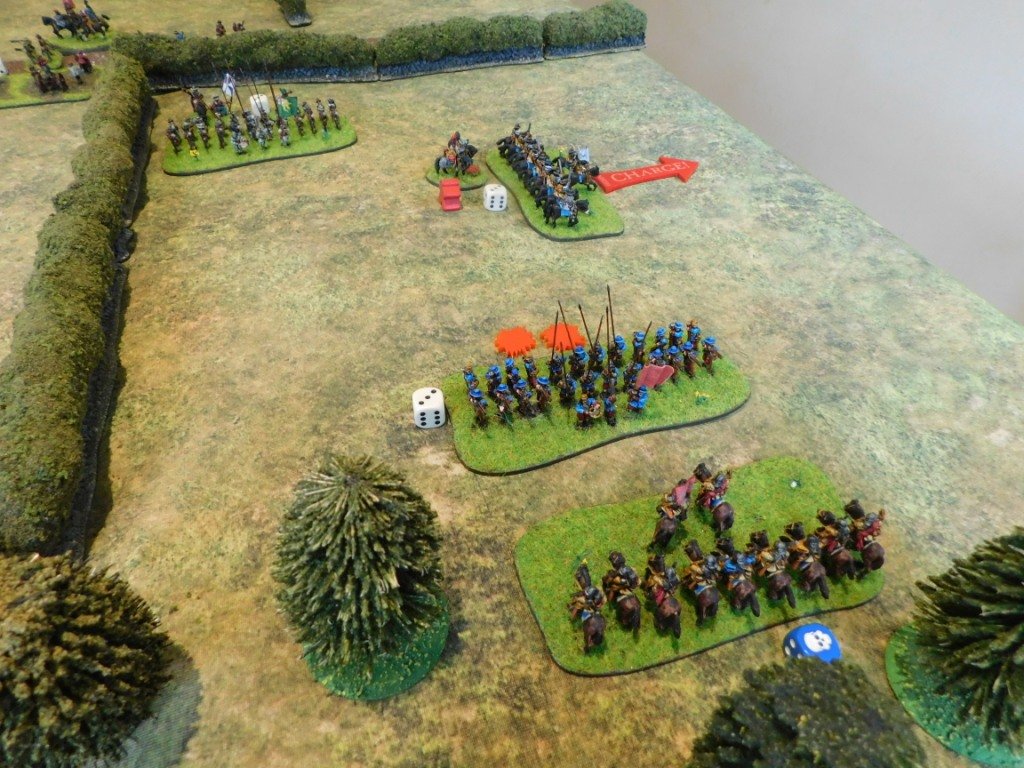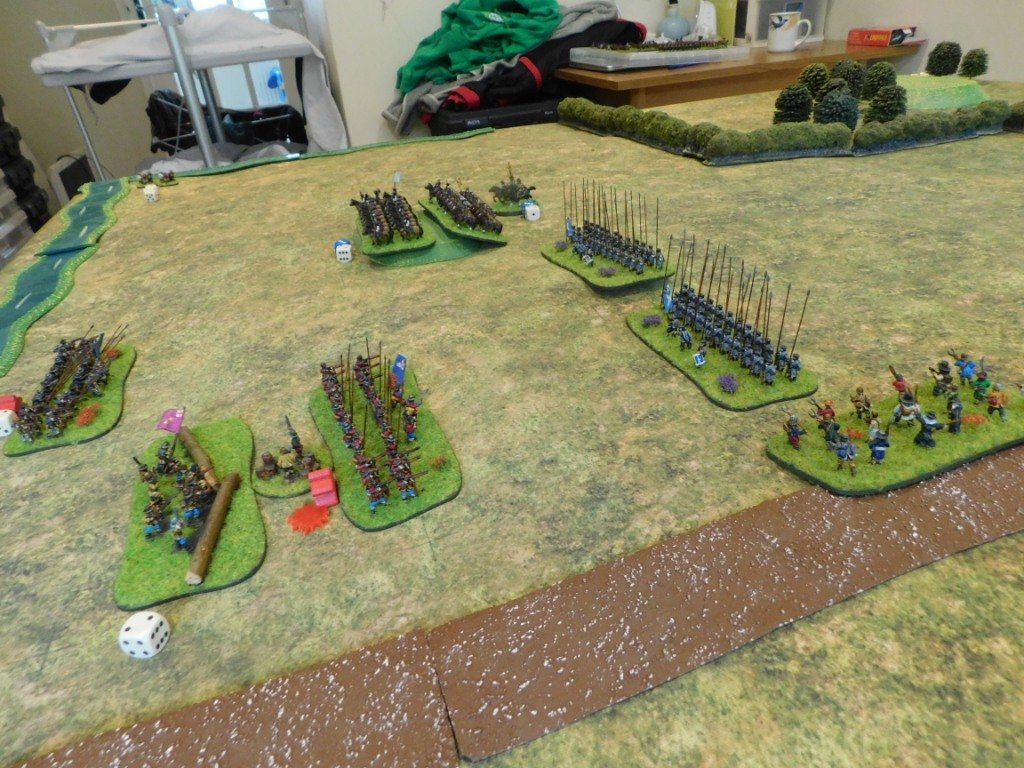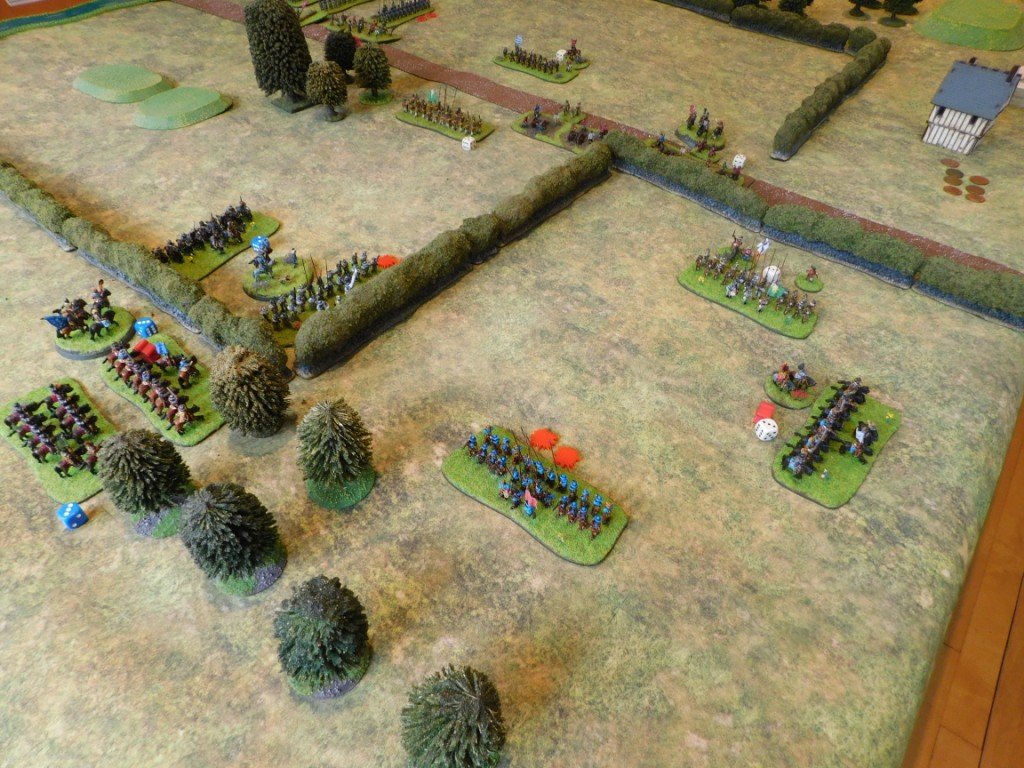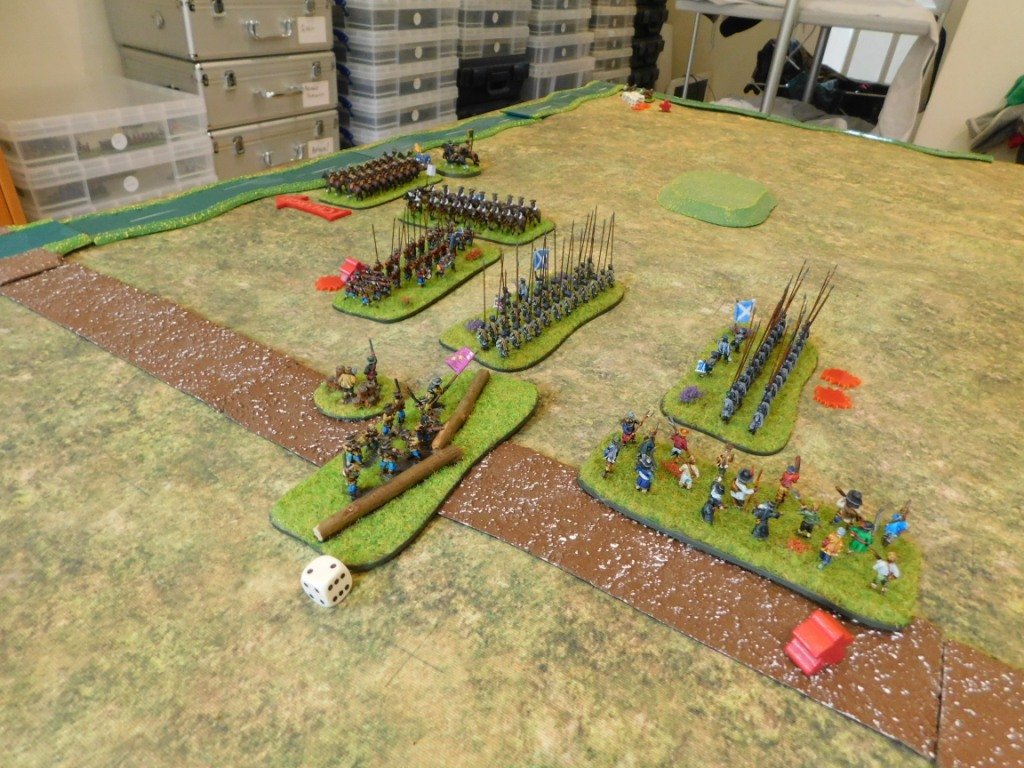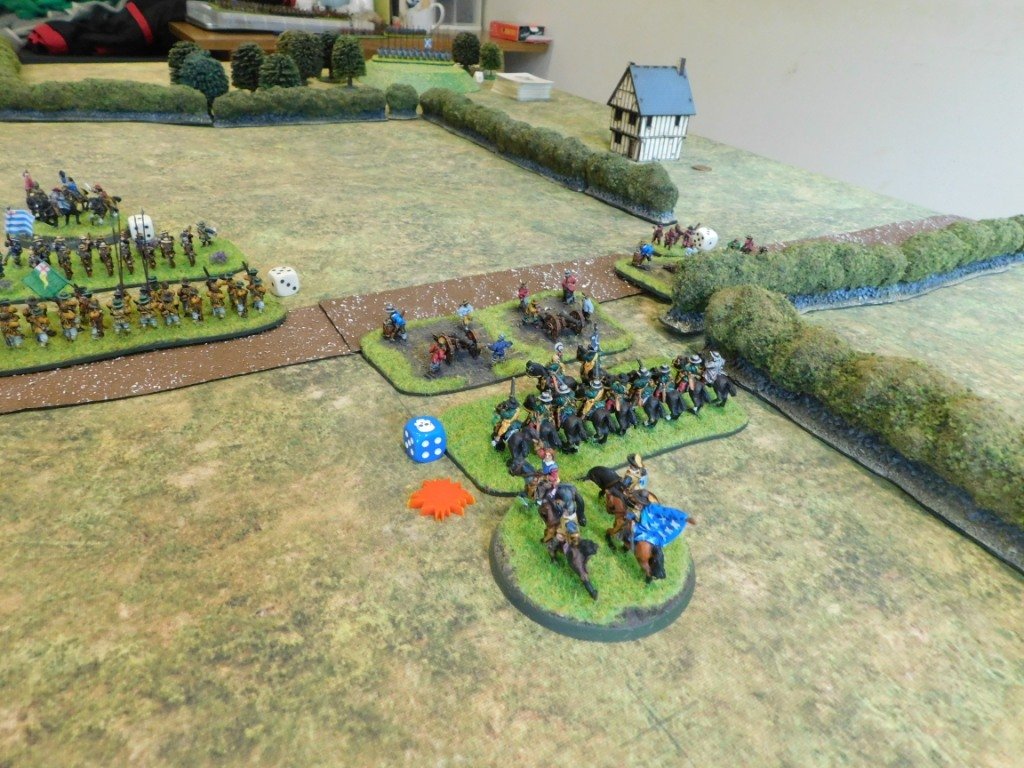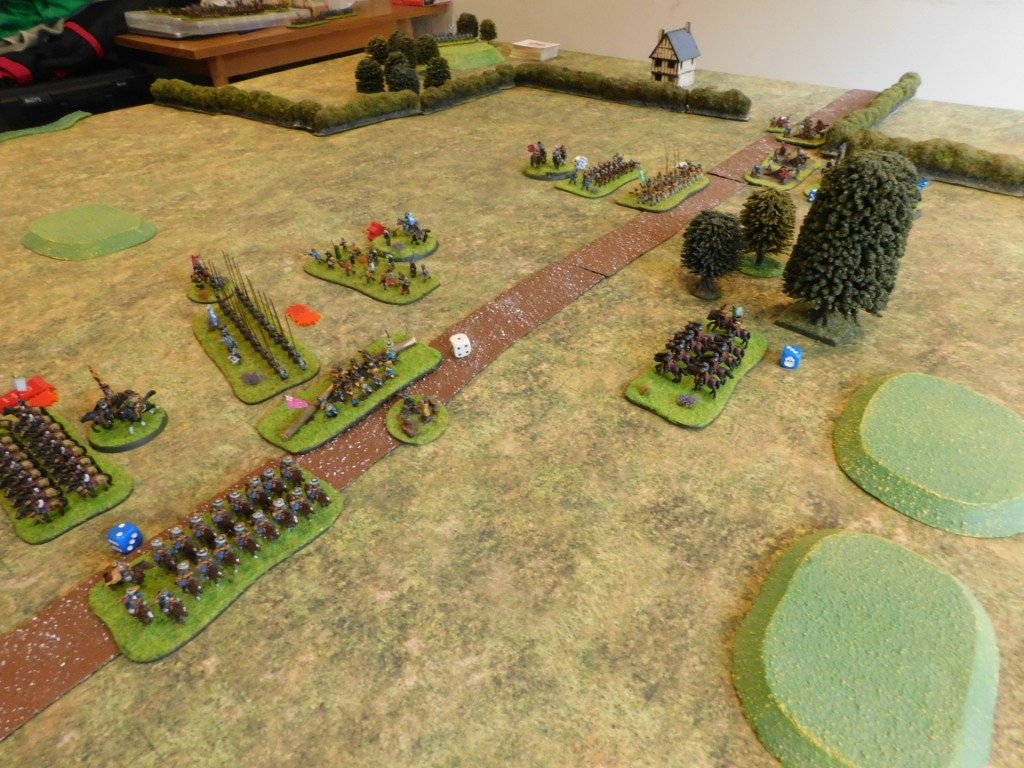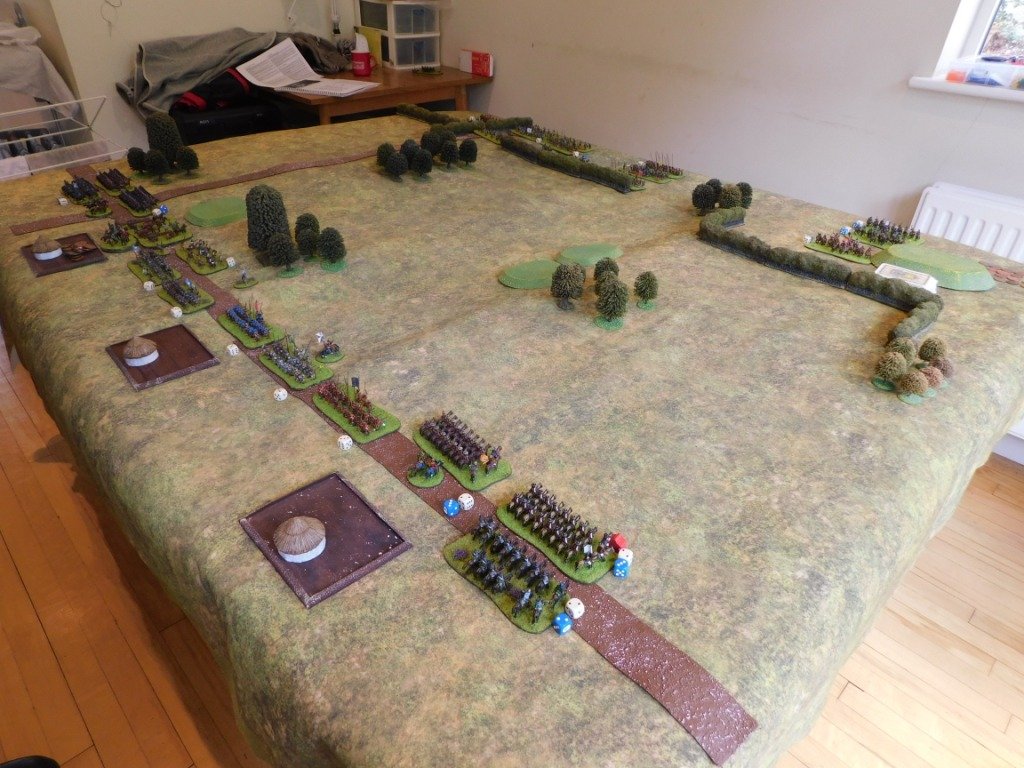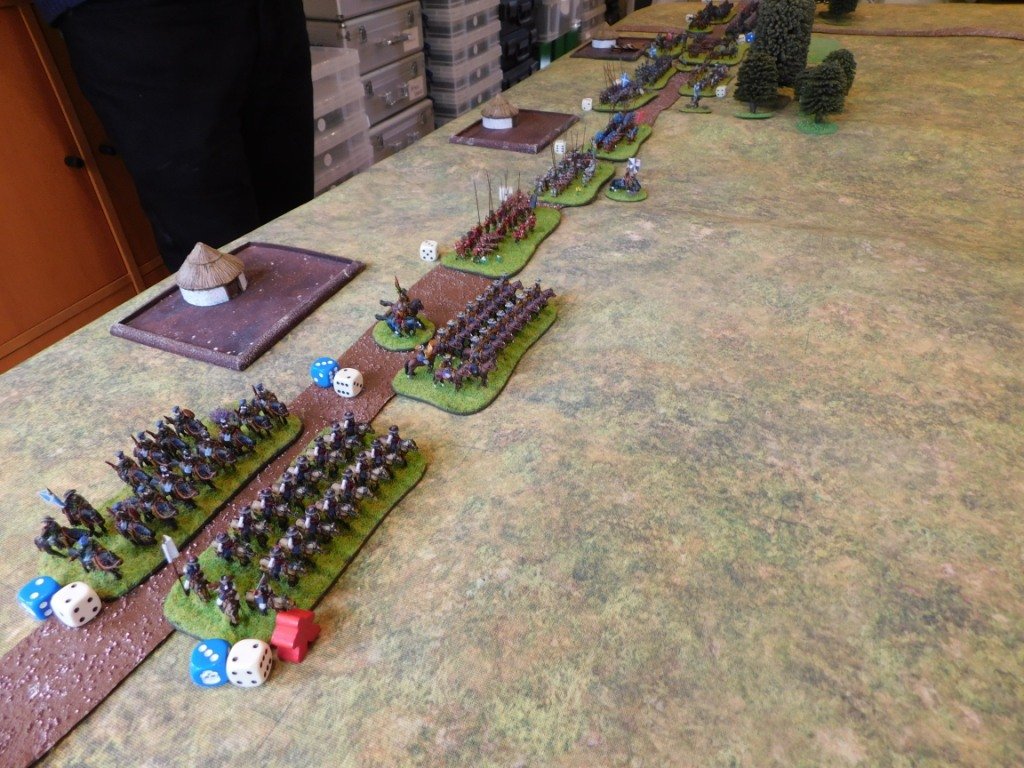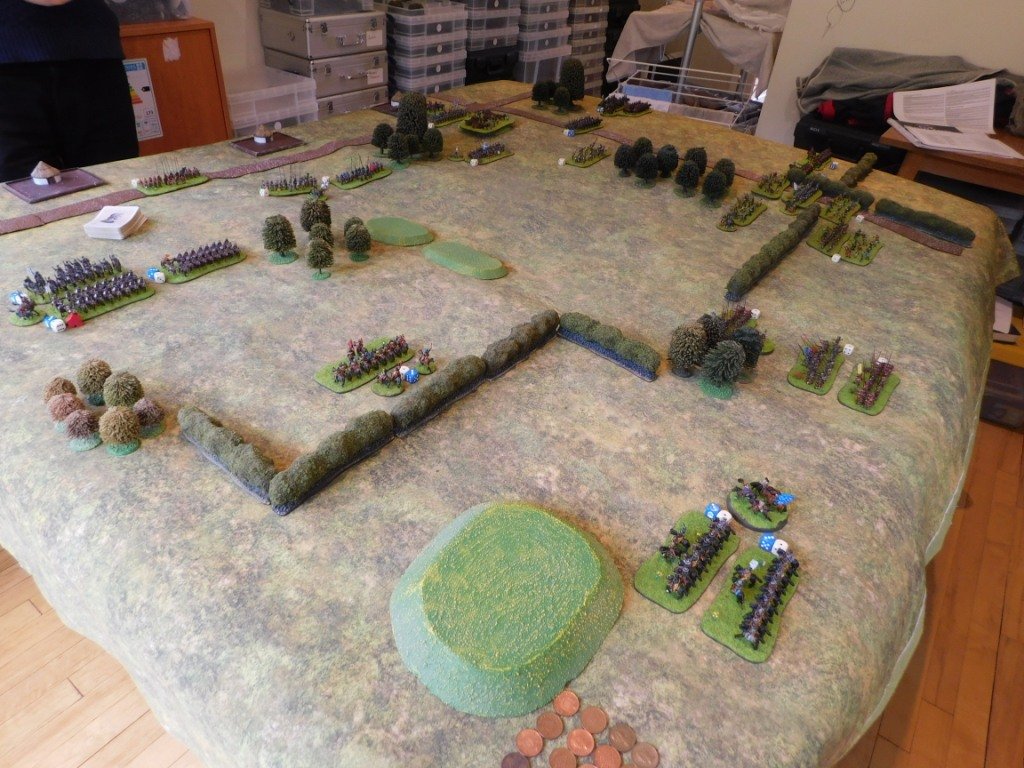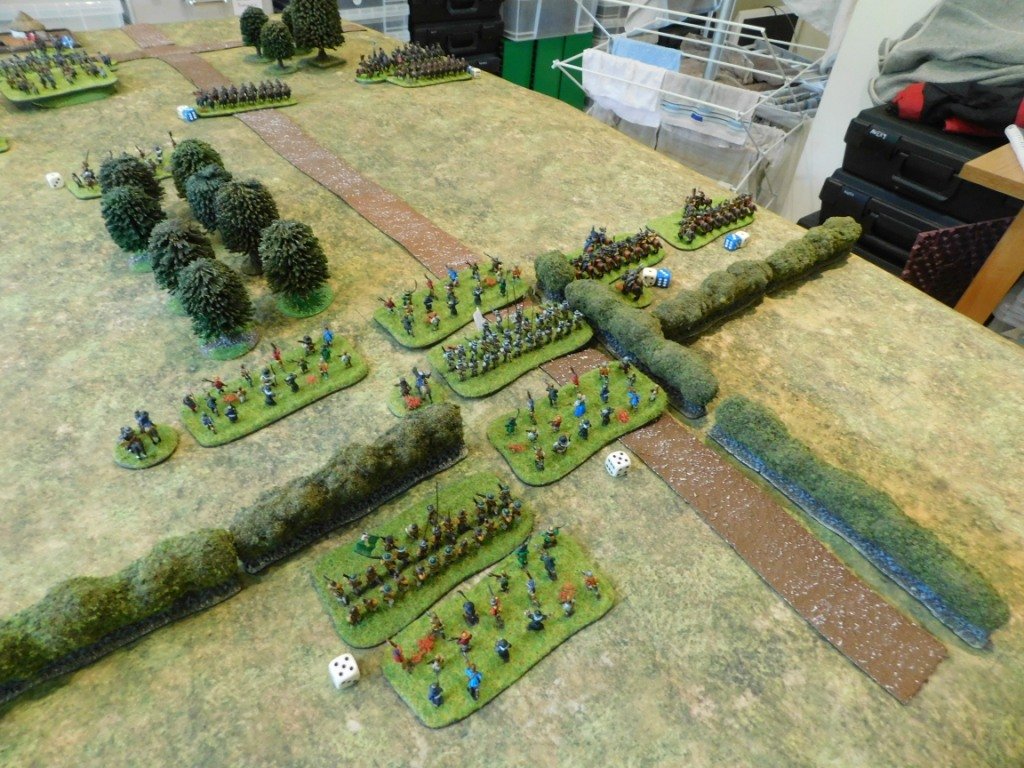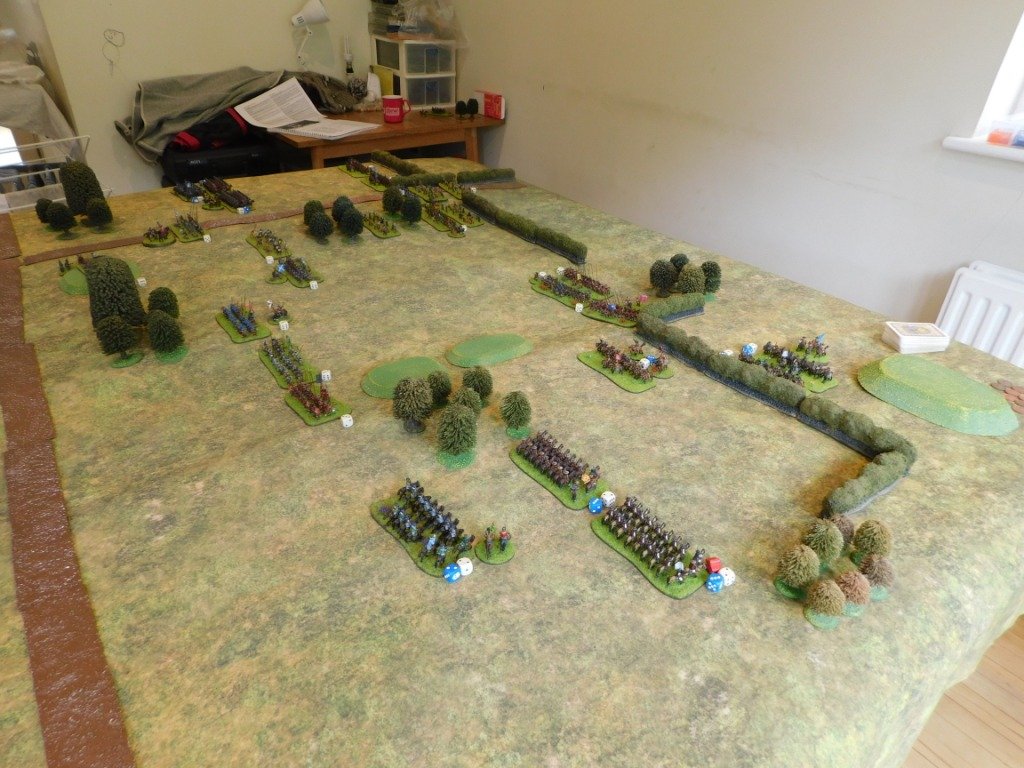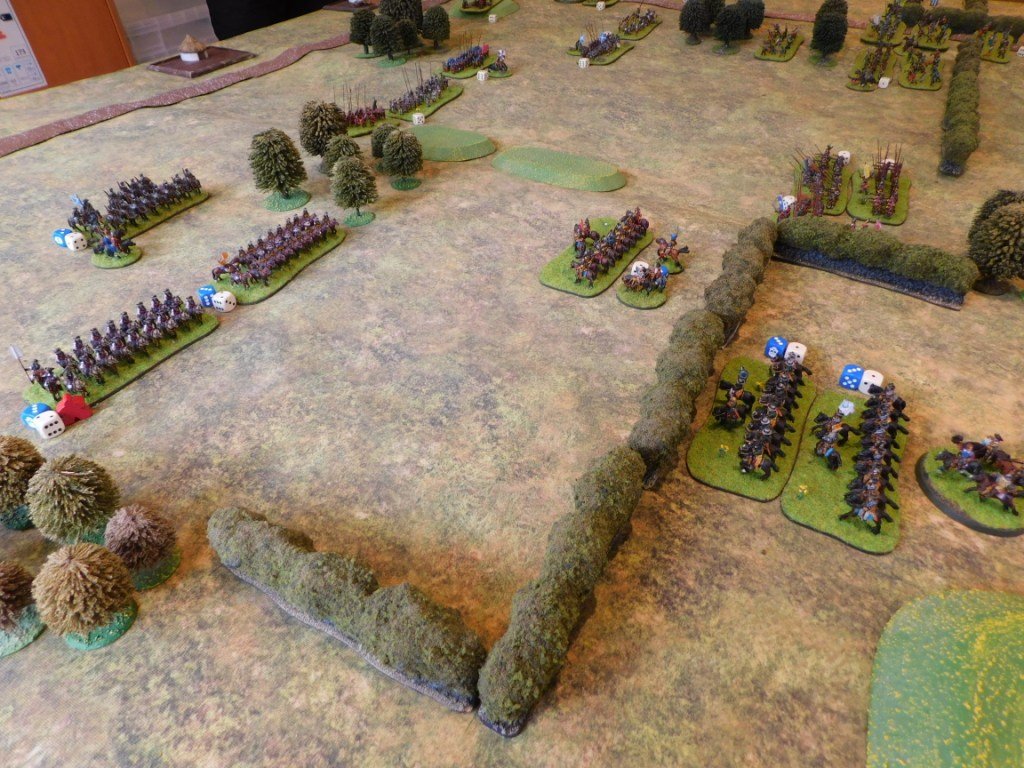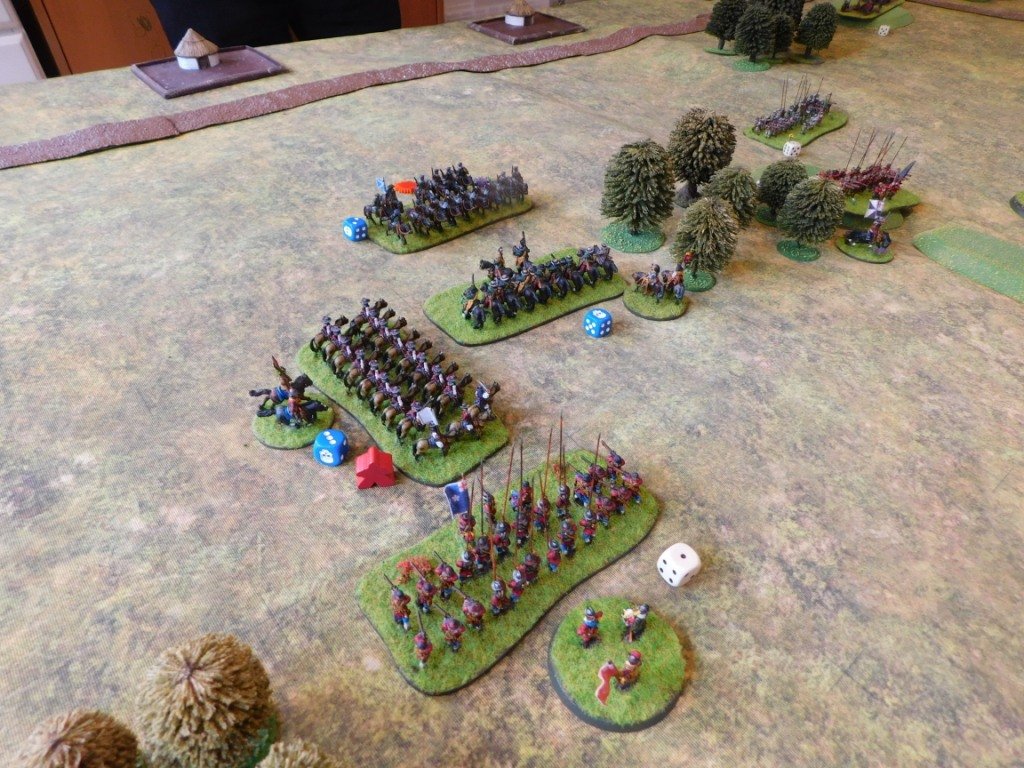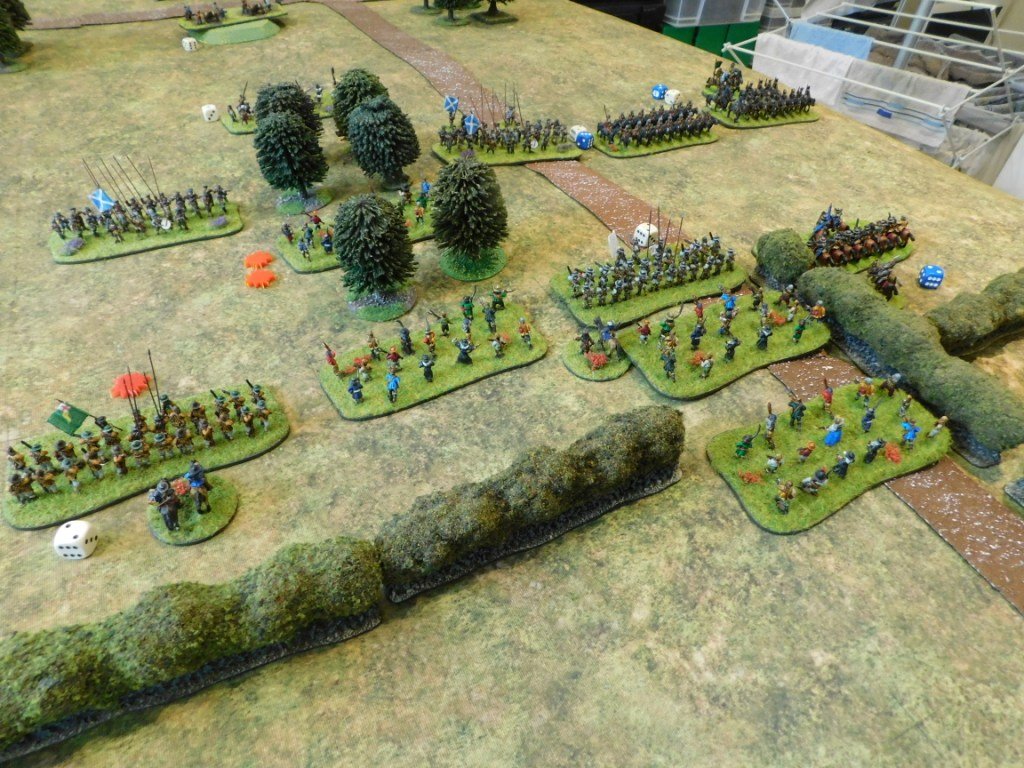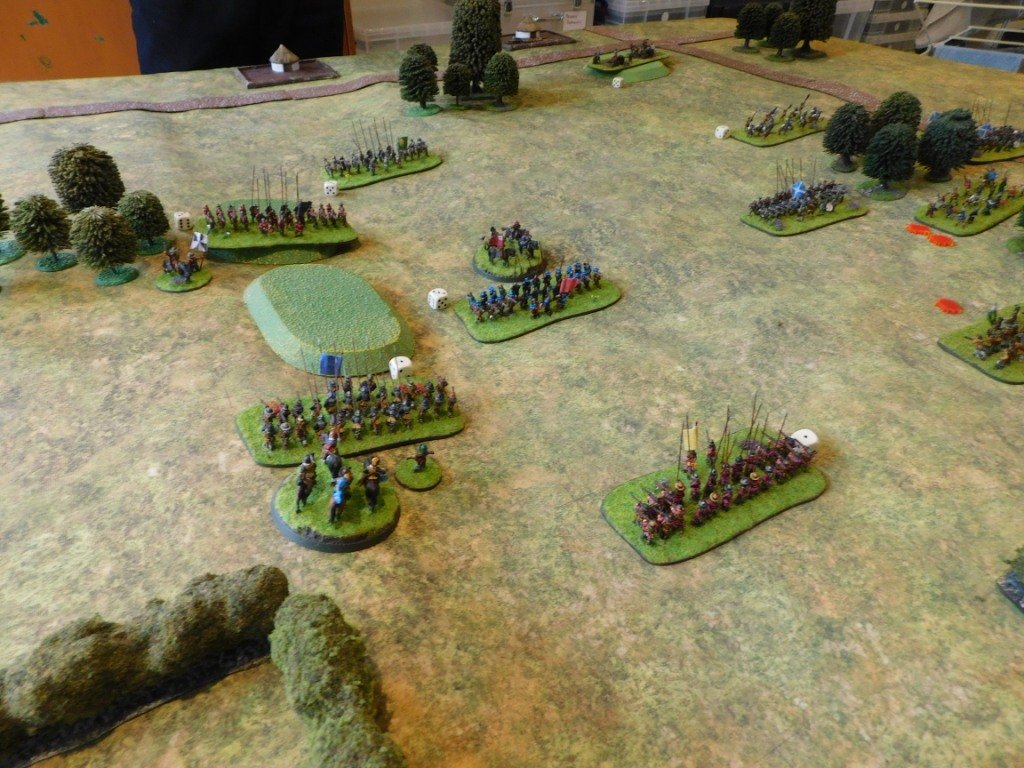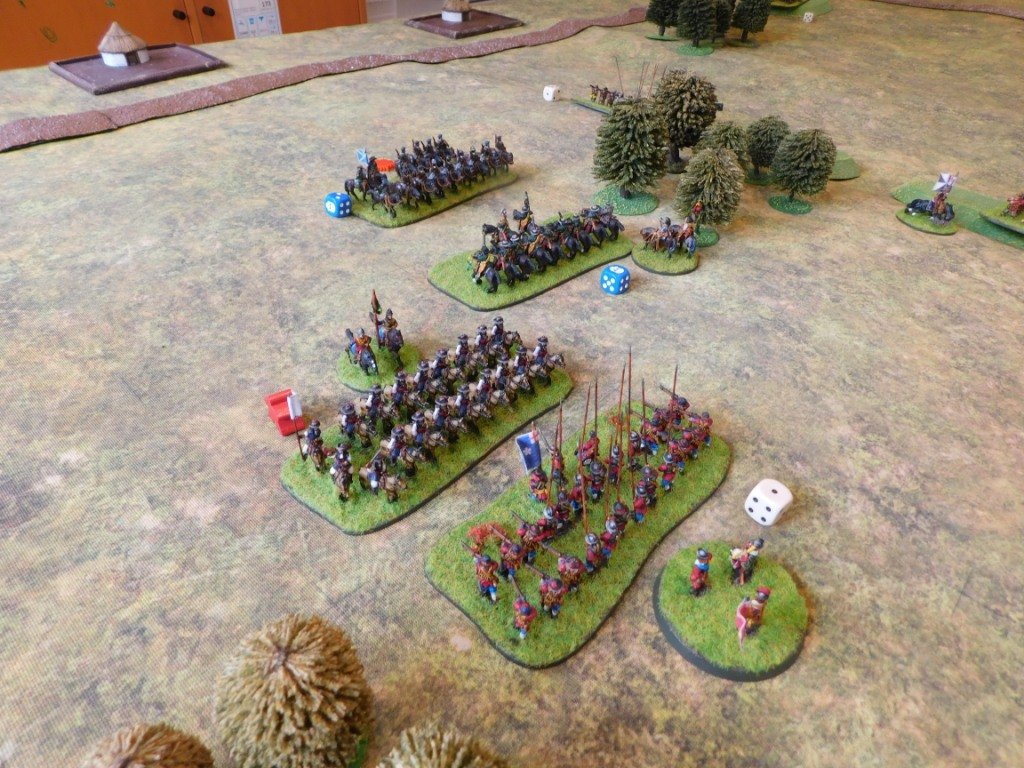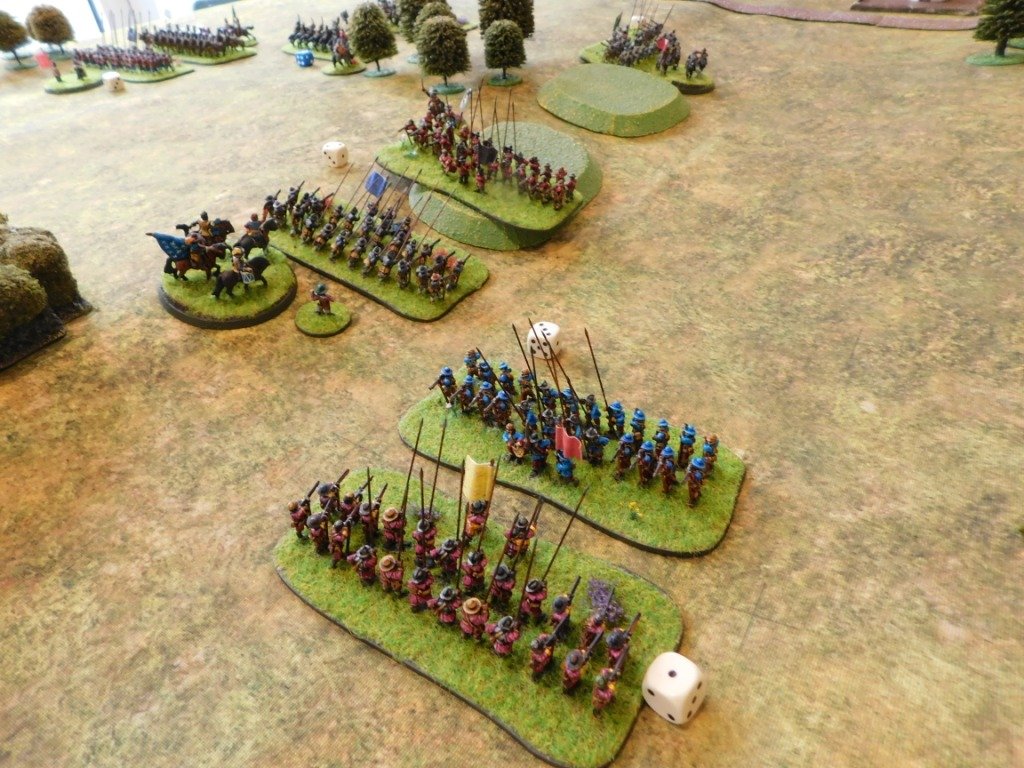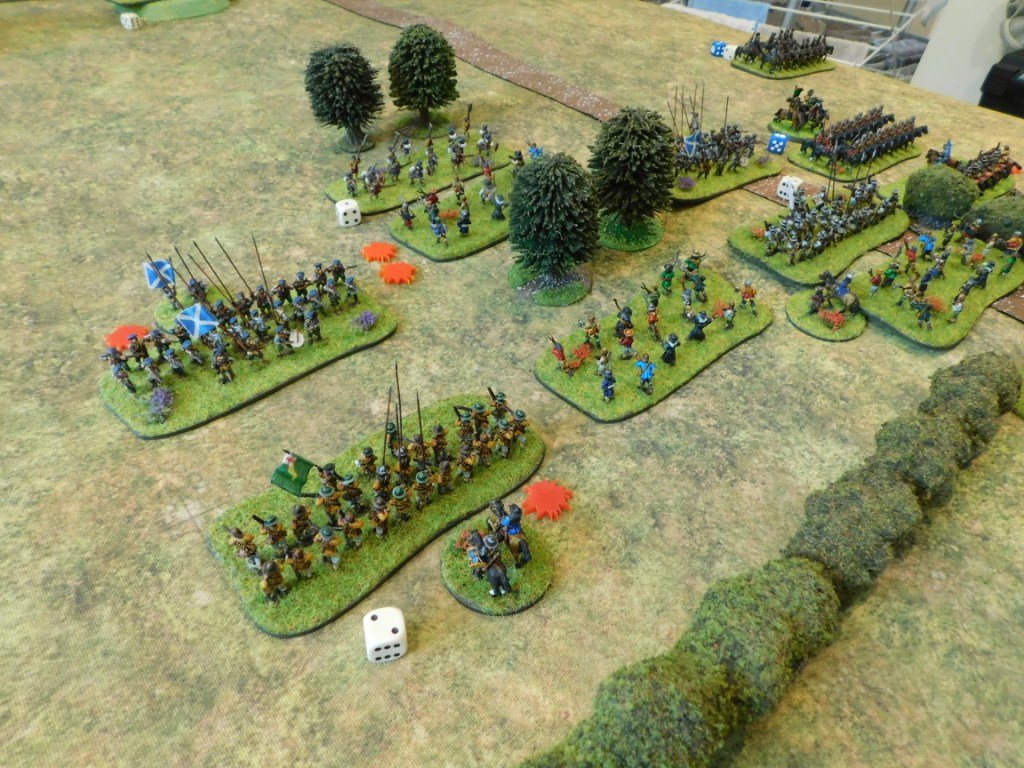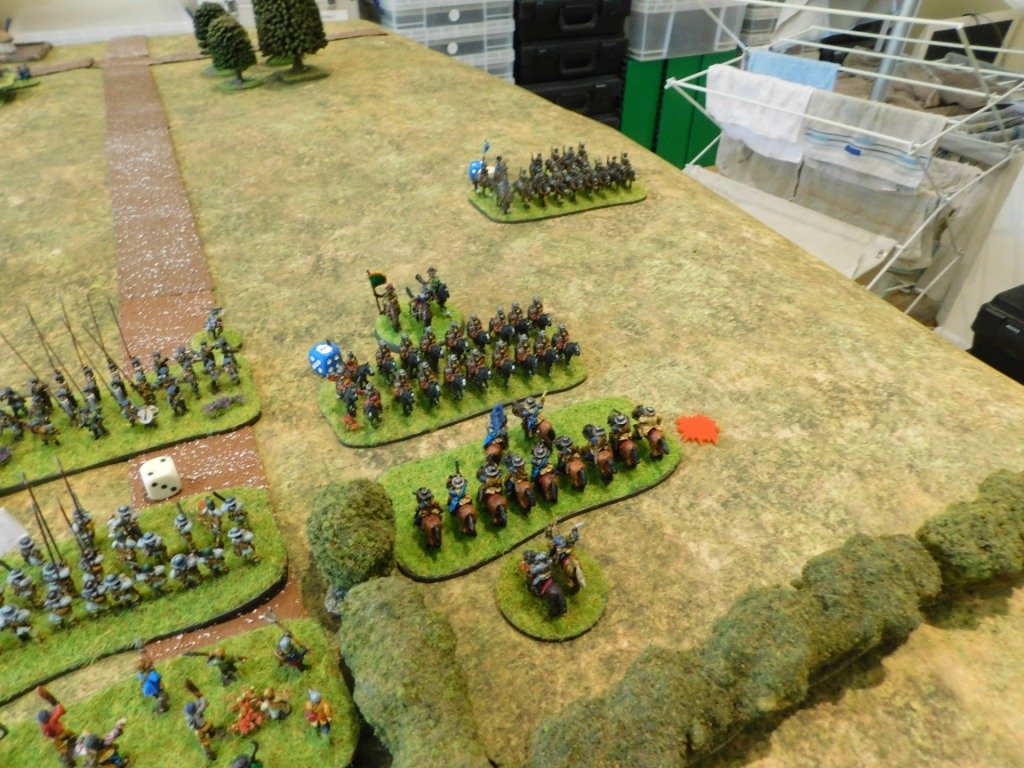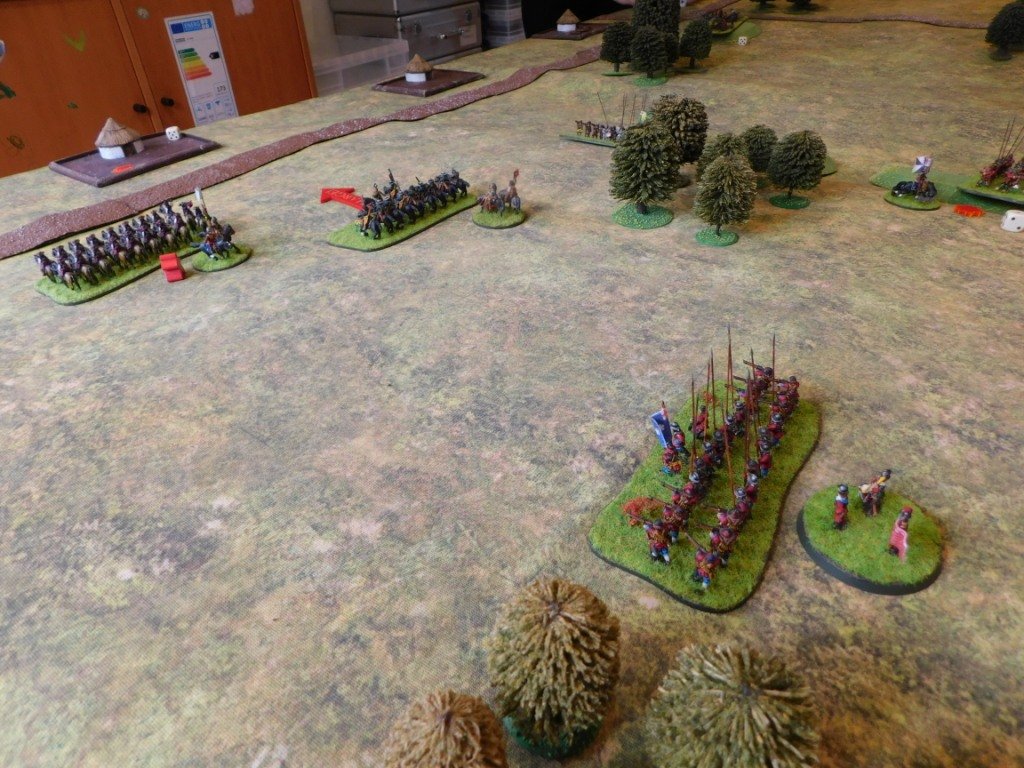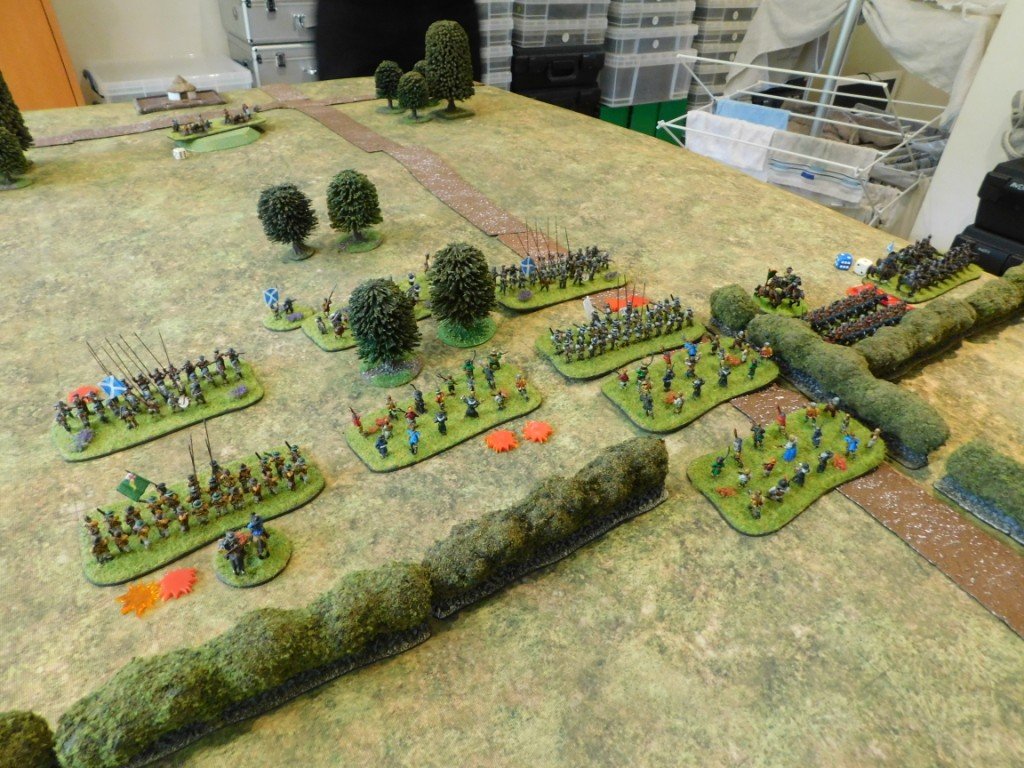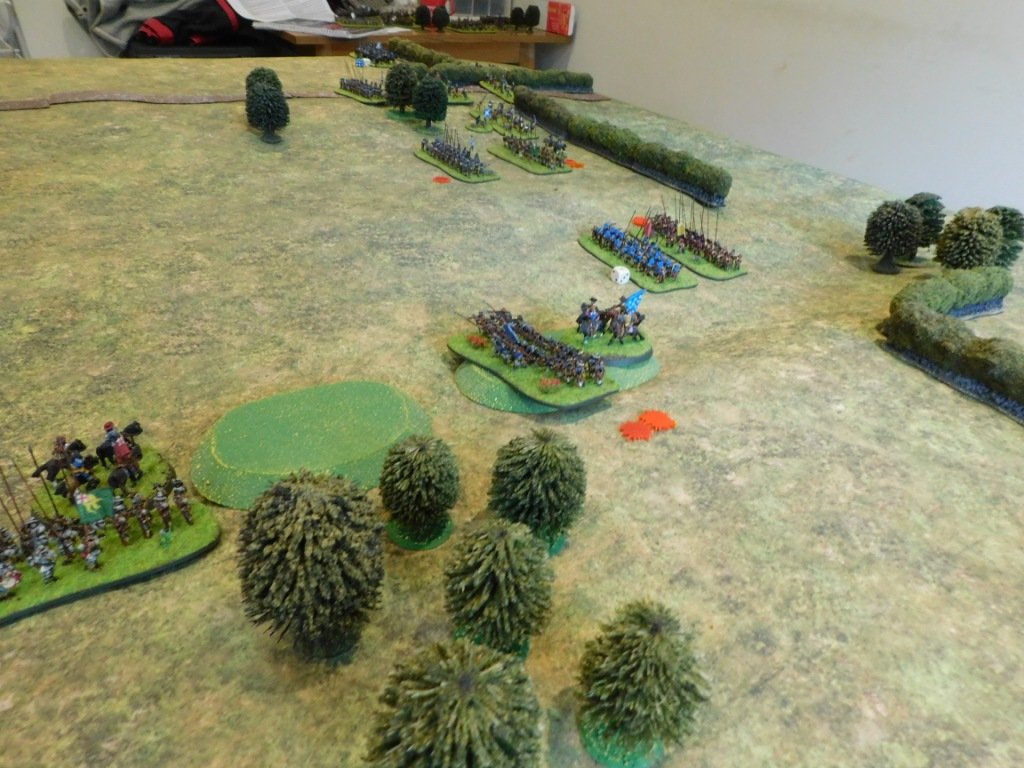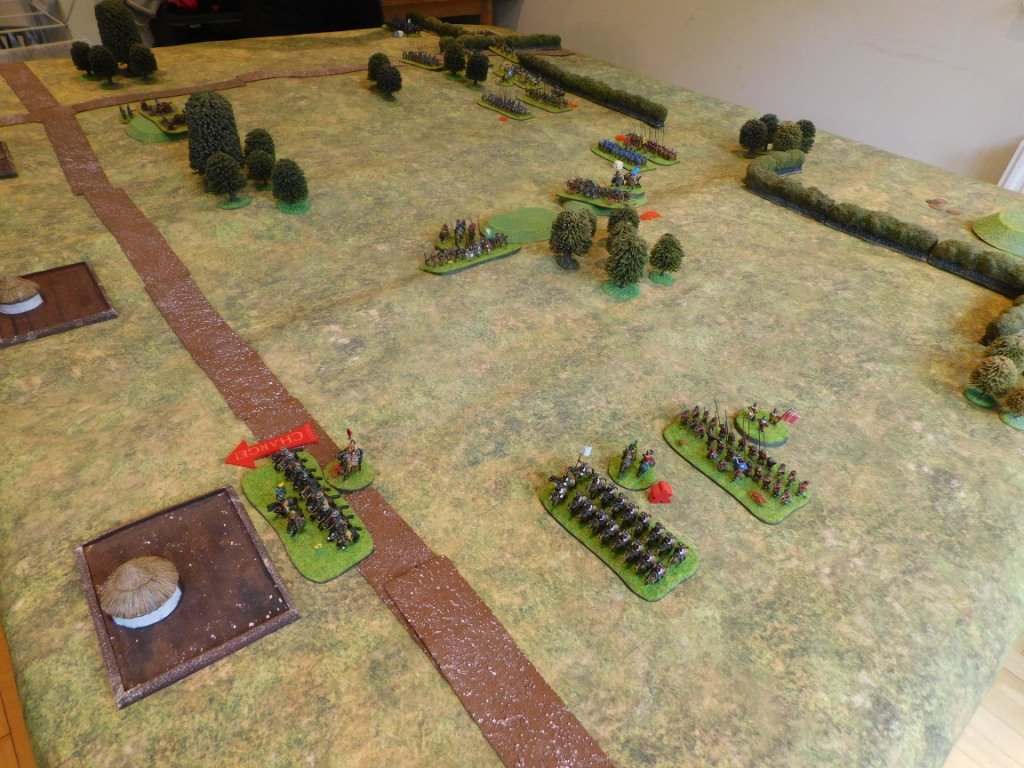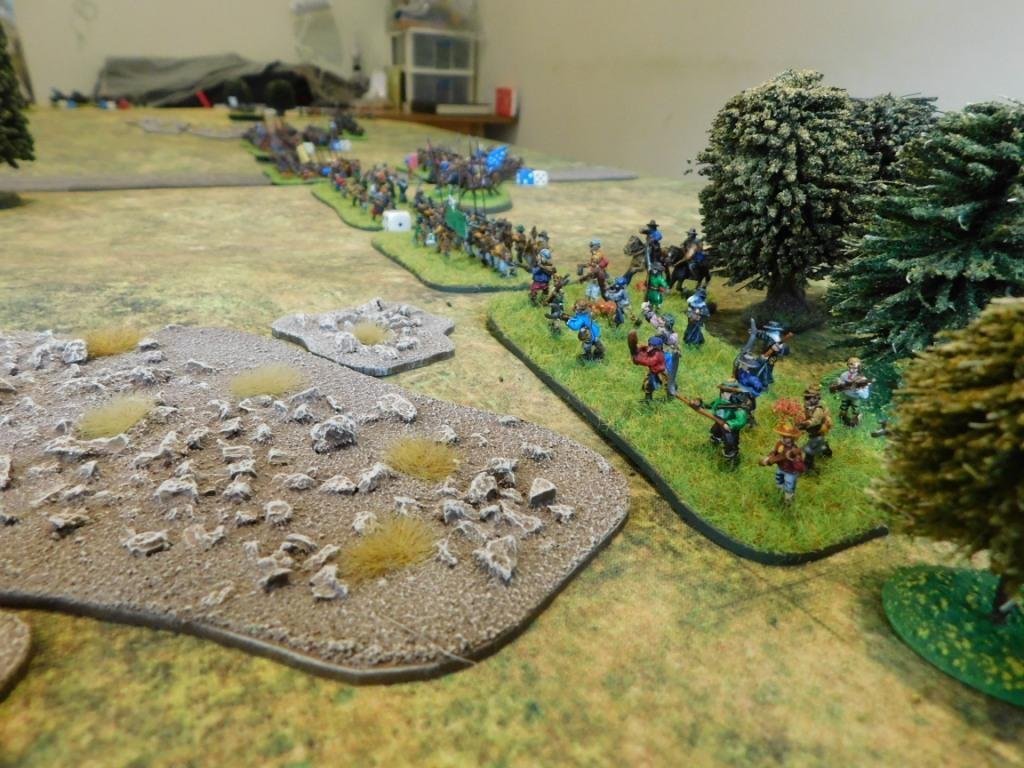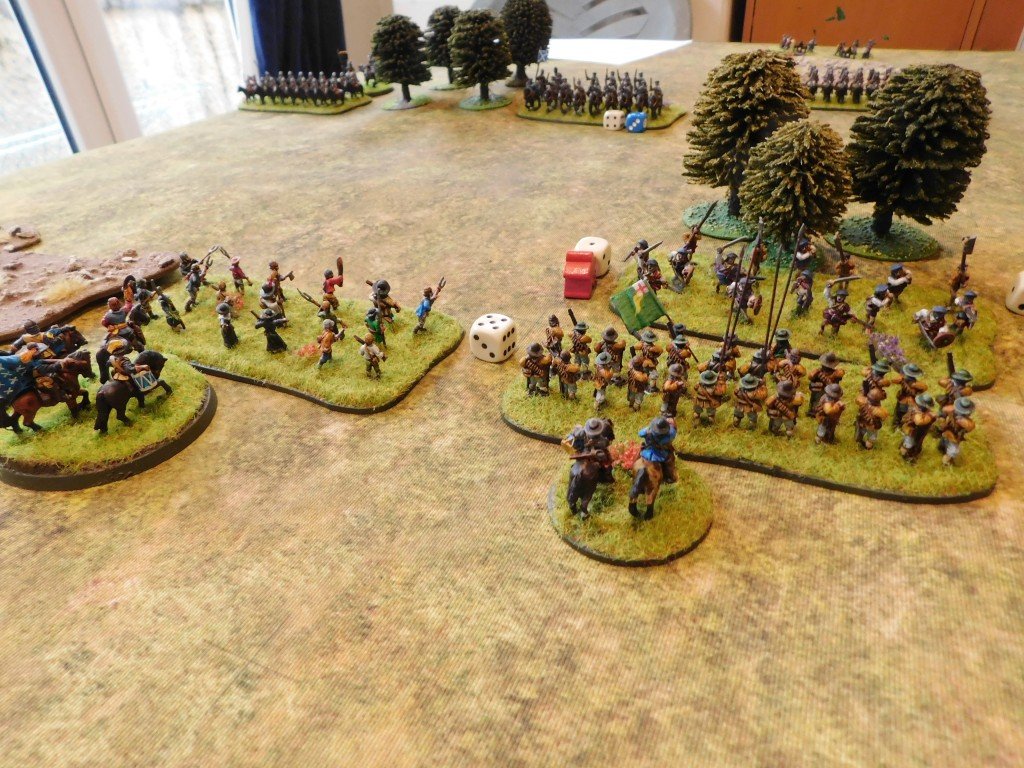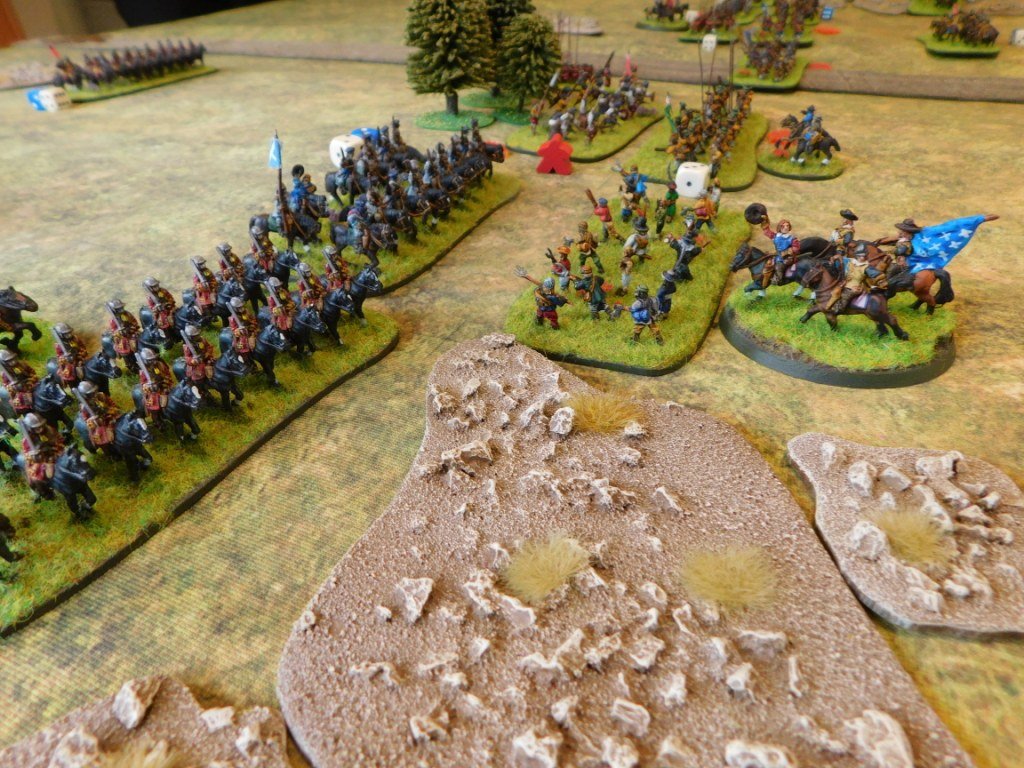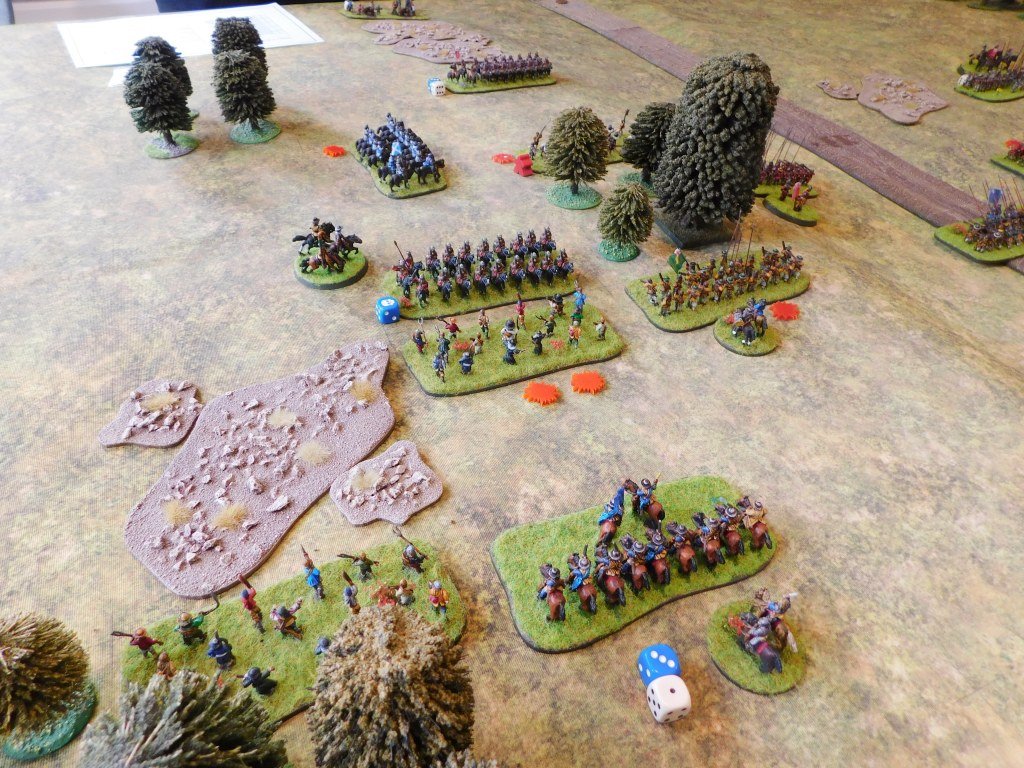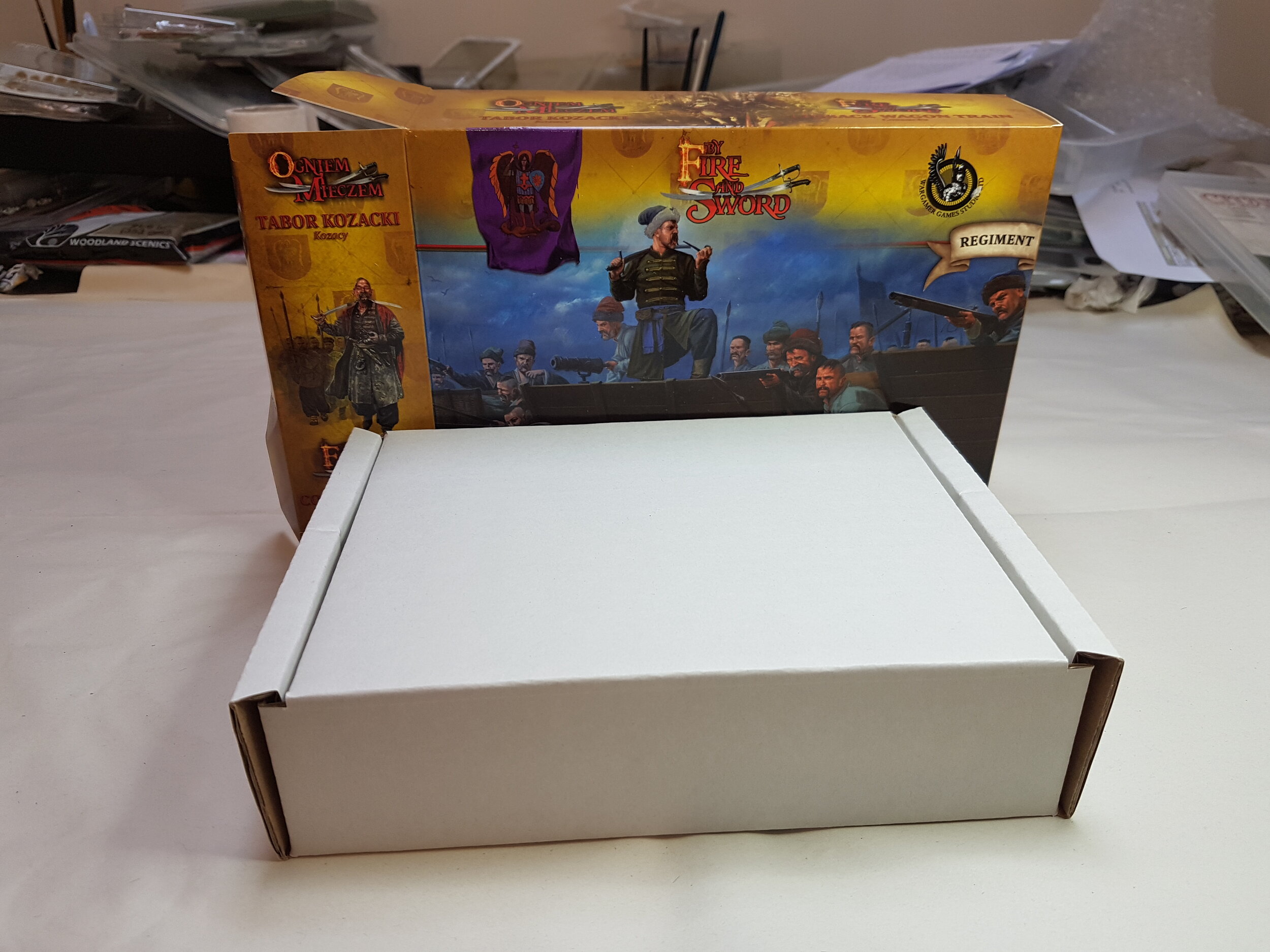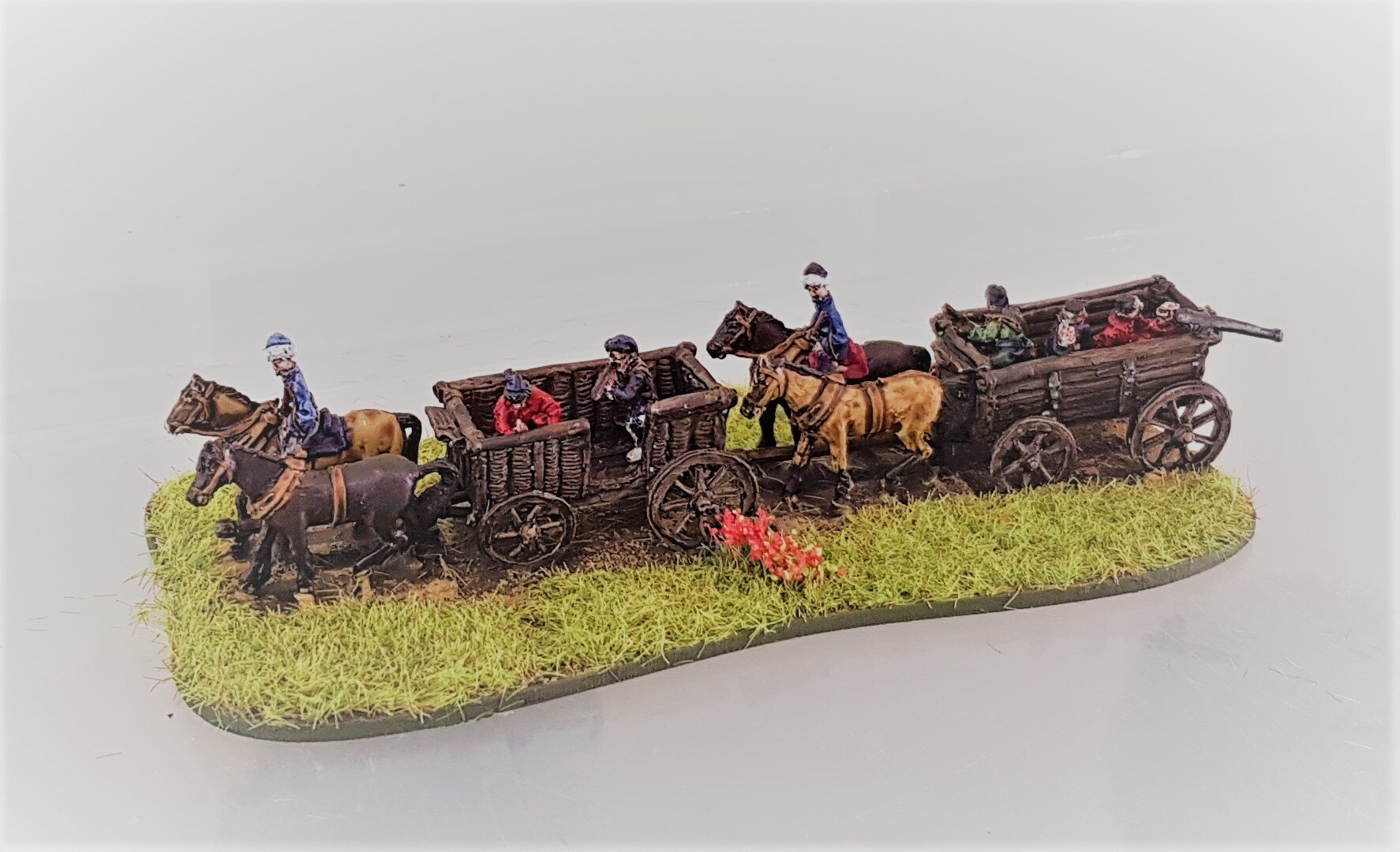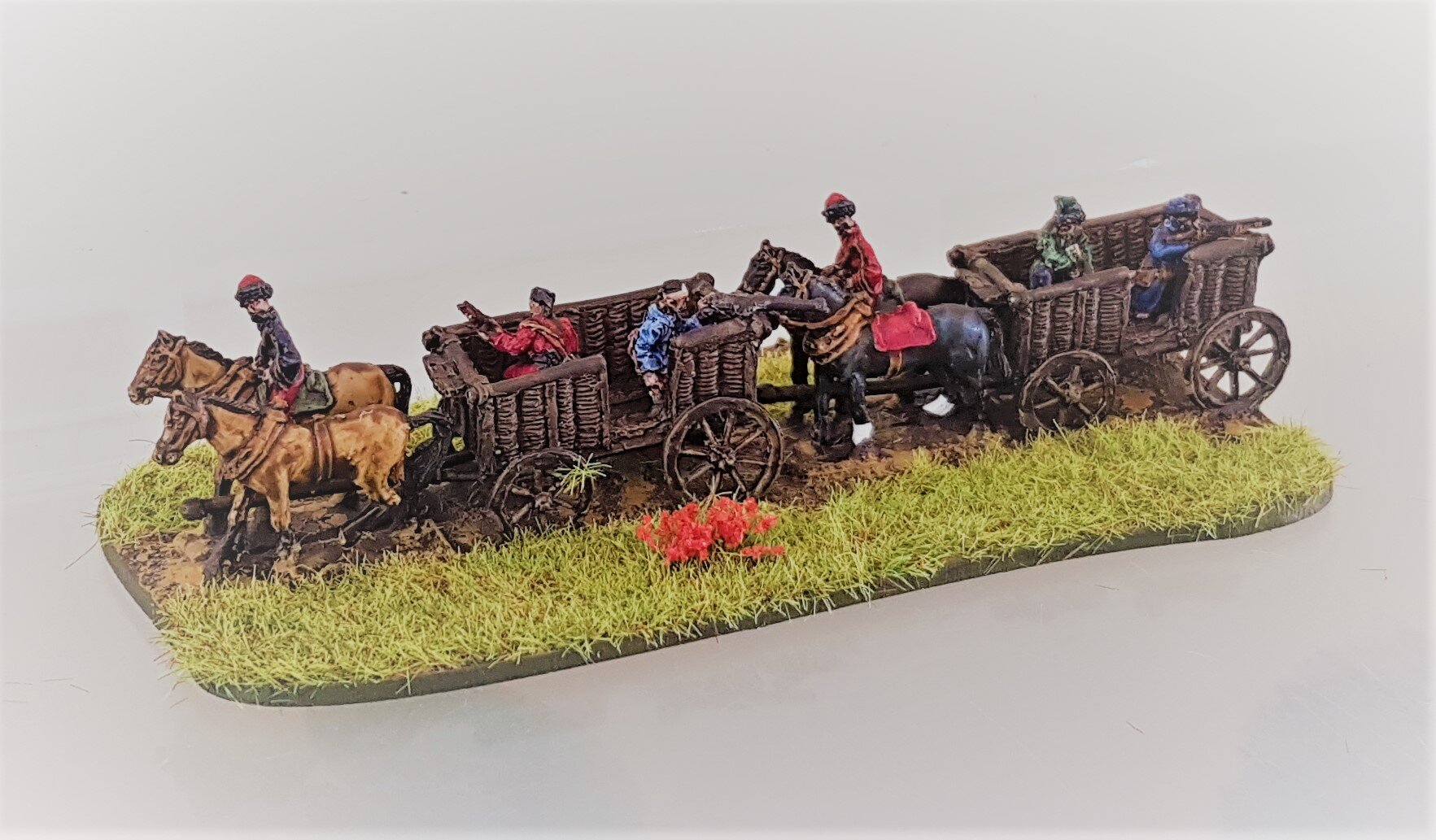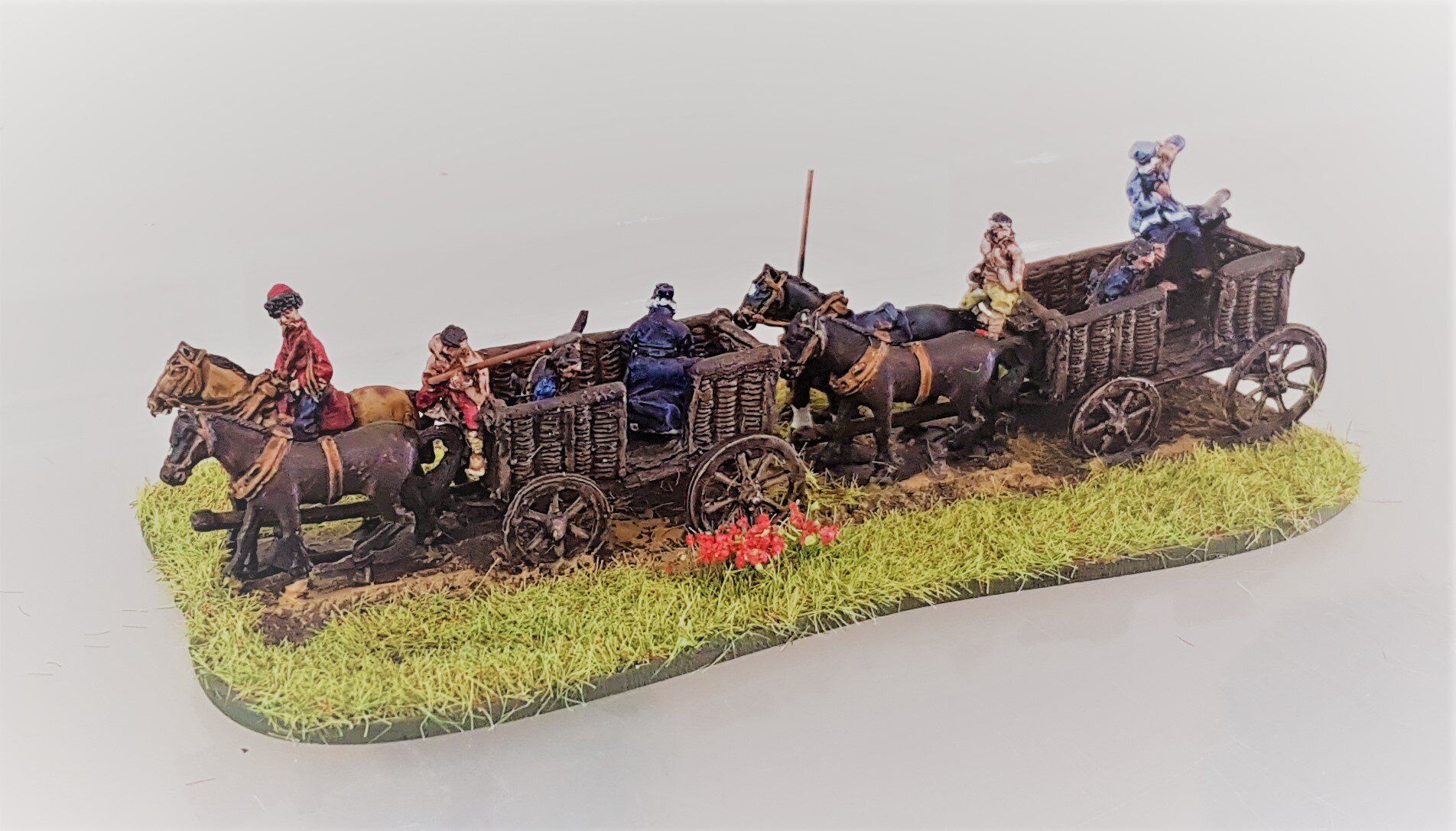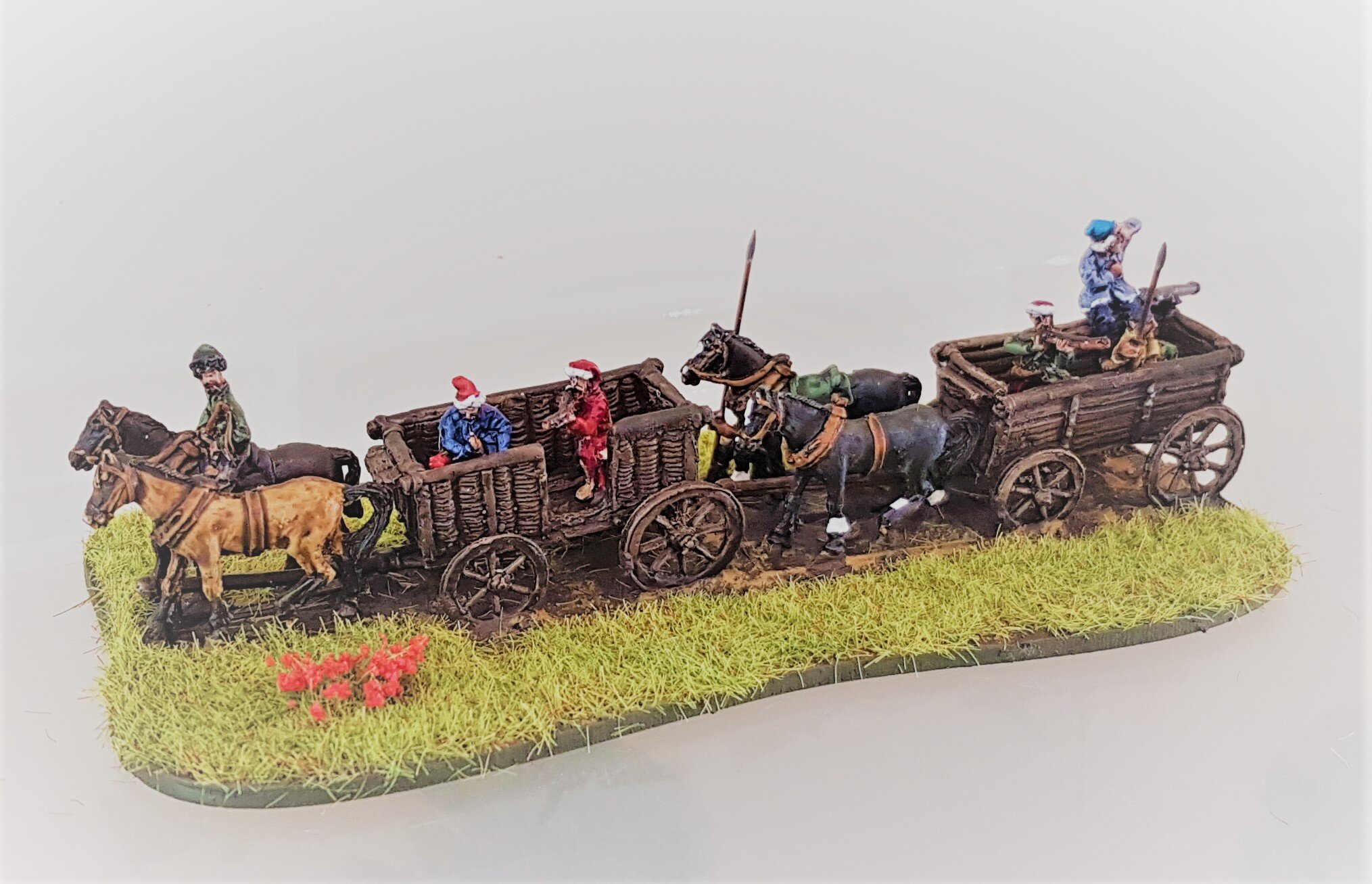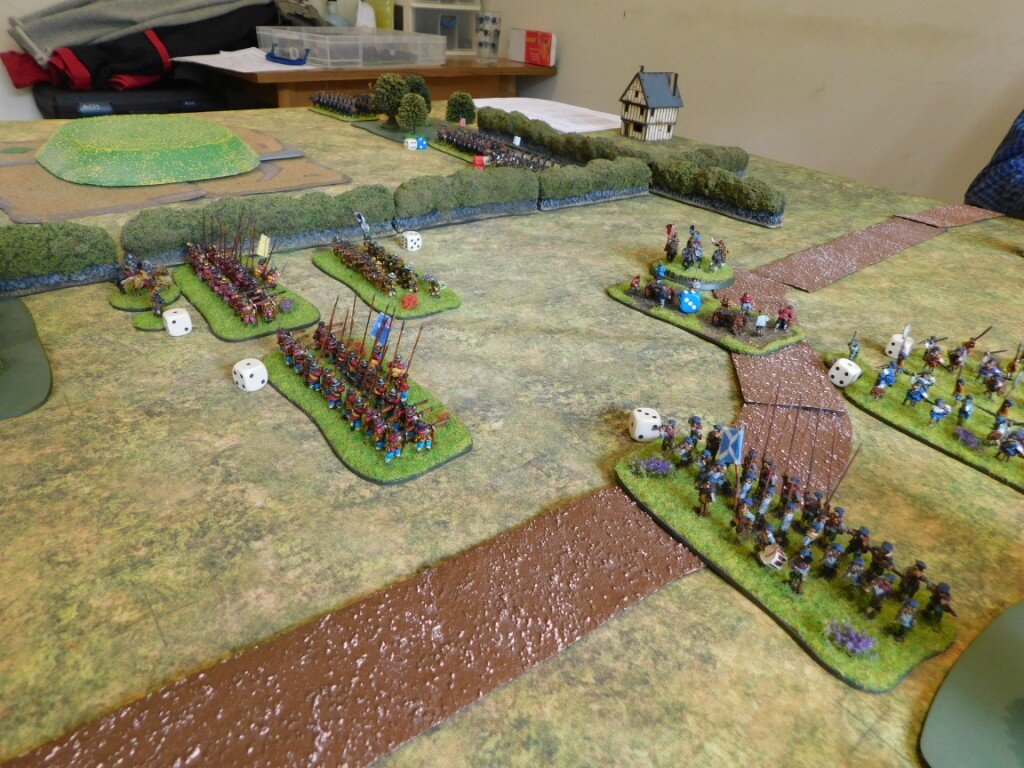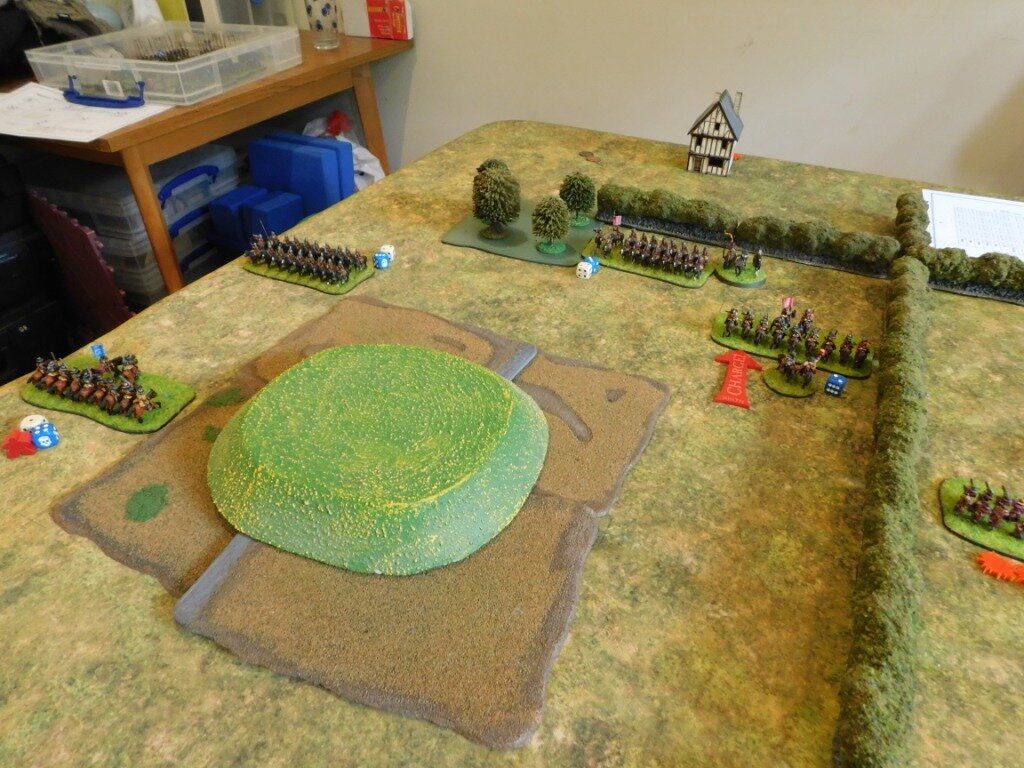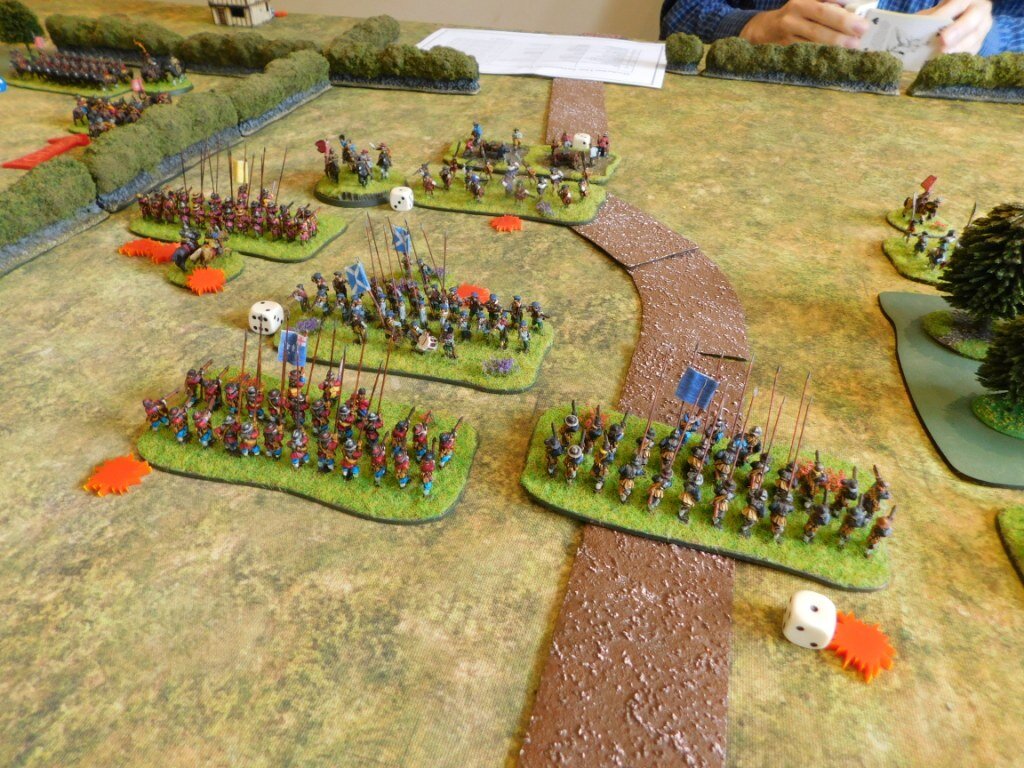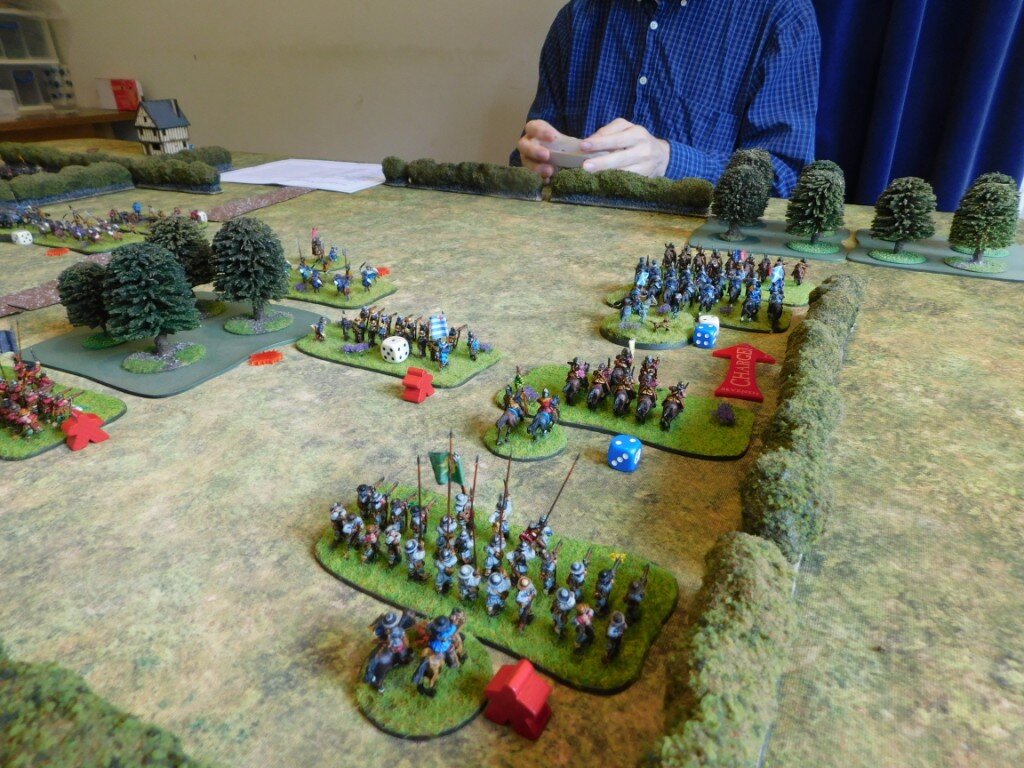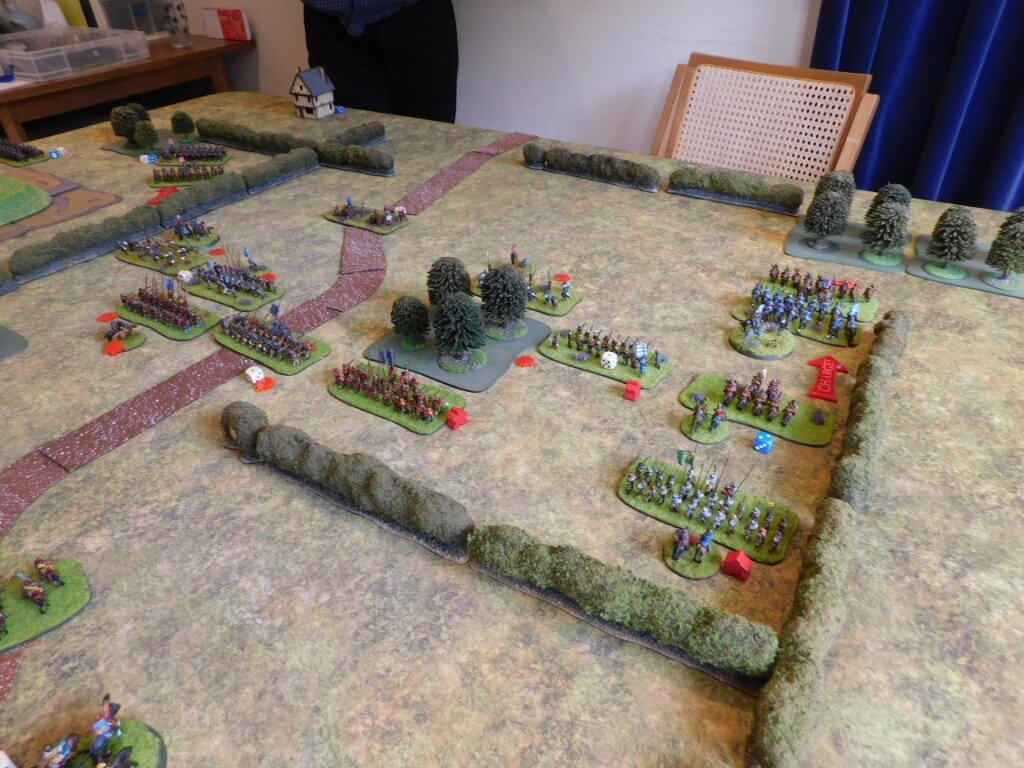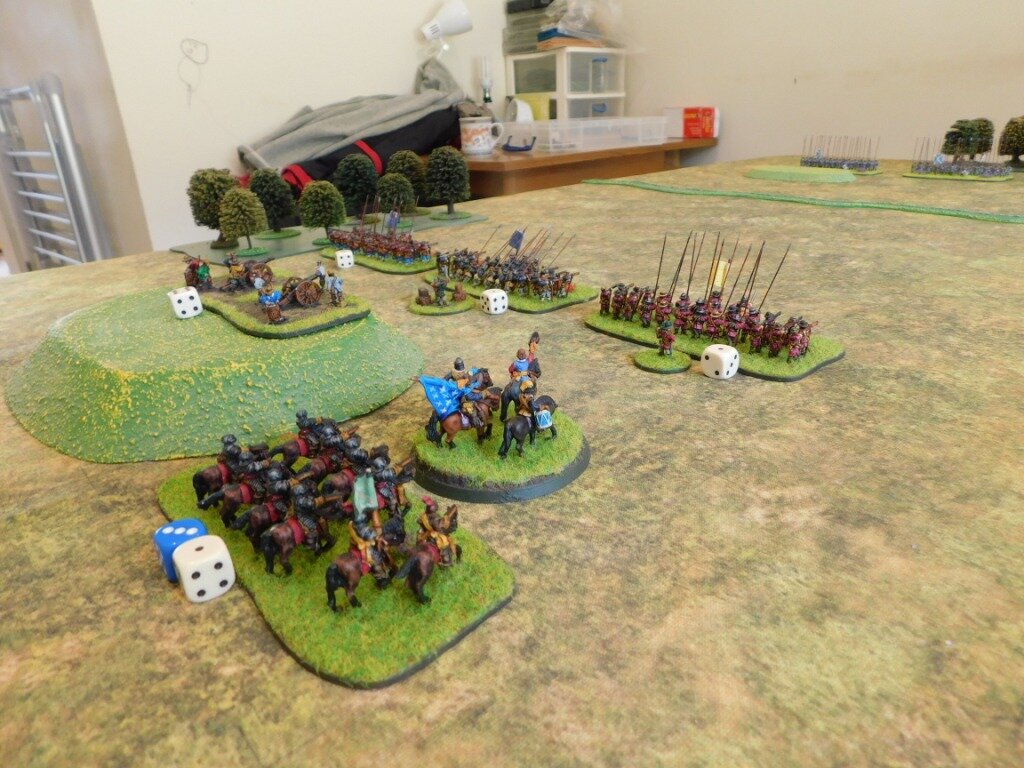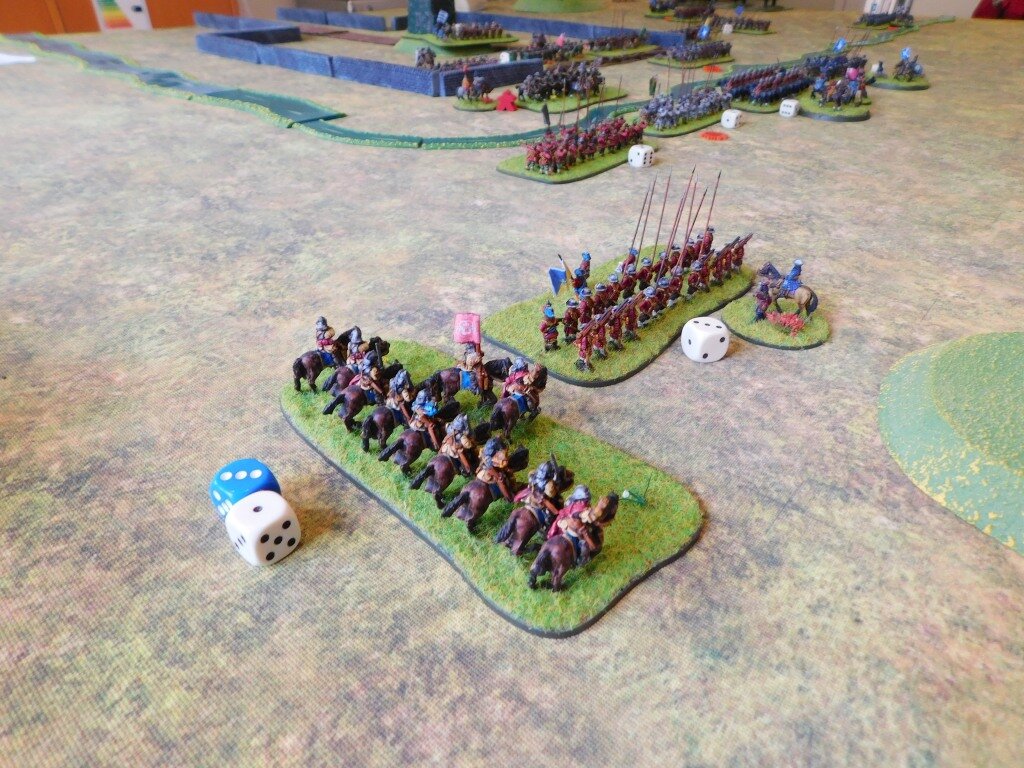FK&P AAR: The Attack on Marlowe Again
/ Robert AveryNew friend Rob came up for a couple of games of For King & Parliament, a system he was considering but hadn’t played before, so where better to start than the first game from my Marlowe to Maidenhythe scenario pack.
Without going into the detail of why and what for, the Royalists are attacking a Parliamentarian force “dug in” on the approaches to Marlowe. Rob would play the Royalist, I took the Parliamentarians.
Royalists on the left, Roundheads on the right
Here’s a pictorial account of the game:
View fullsize
![Royalist lines just before the battle began]()

Royalist lines just before the battle began
View fullsize
![Roundhead Dutch horse ready for action]()

Roundhead Dutch horse ready for action
View fullsize
![Big Cavalry clash on the Royalist right wing]()

Big Cavalry clash on the Royalist right wing
View fullsize
![Royalist horse driving forward]()

Royalist horse driving forward
View fullsize
![The Parliamentarians await the Royalist assault]()

The Parliamentarians await the Royalist assault
View fullsize
![Royalist horse break through]()

Royalist horse break through
View fullsize
![Royalist infantry move to clear a Forlorn Hope]()
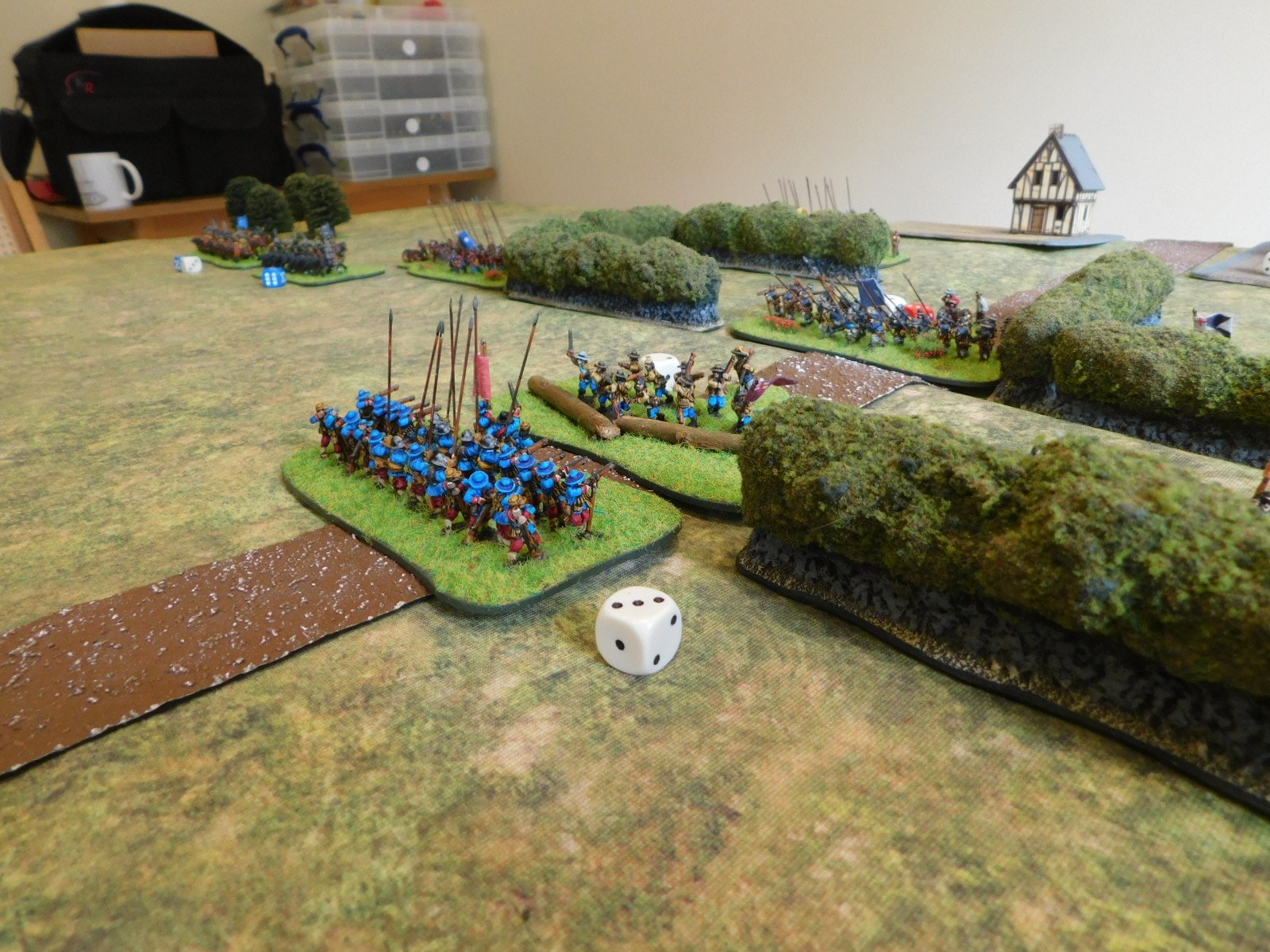
Royalist infantry move to clear a Forlorn Hope
View fullsize
![Overview of the right wing]()

Overview of the right wing
View fullsize
![Parliamentarian left wing getting outflanked]()

Parliamentarian left wing getting outflanked
View fullsize
![Parliamentarian horse retreat!]()

Parliamentarian horse retreat!
View fullsize
![The centre of the battlefield]()

The centre of the battlefield
View fullsize
![Roundheads form hedgehog (note the "hedgehog" marker)]()

Roundheads form hedgehog (note the "hedgehog" marker)
View fullsize
![Roundhead Forlorn Hope holding on (top of the picture)]()

Roundhead Forlorn Hope holding on (top of the picture)
View fullsize
![Roundhead horse still retreating!]()

Roundhead horse still retreating!
View fullsize
![Forlorn Hope still standing!]()

Forlorn Hope still standing!
View fullsize
![The Royalists are determined to break through on the left]()

The Royalists are determined to break through on the left
View fullsize
![Royalist Cuirassiers see off that retreating Roundhead cavalry unit]()
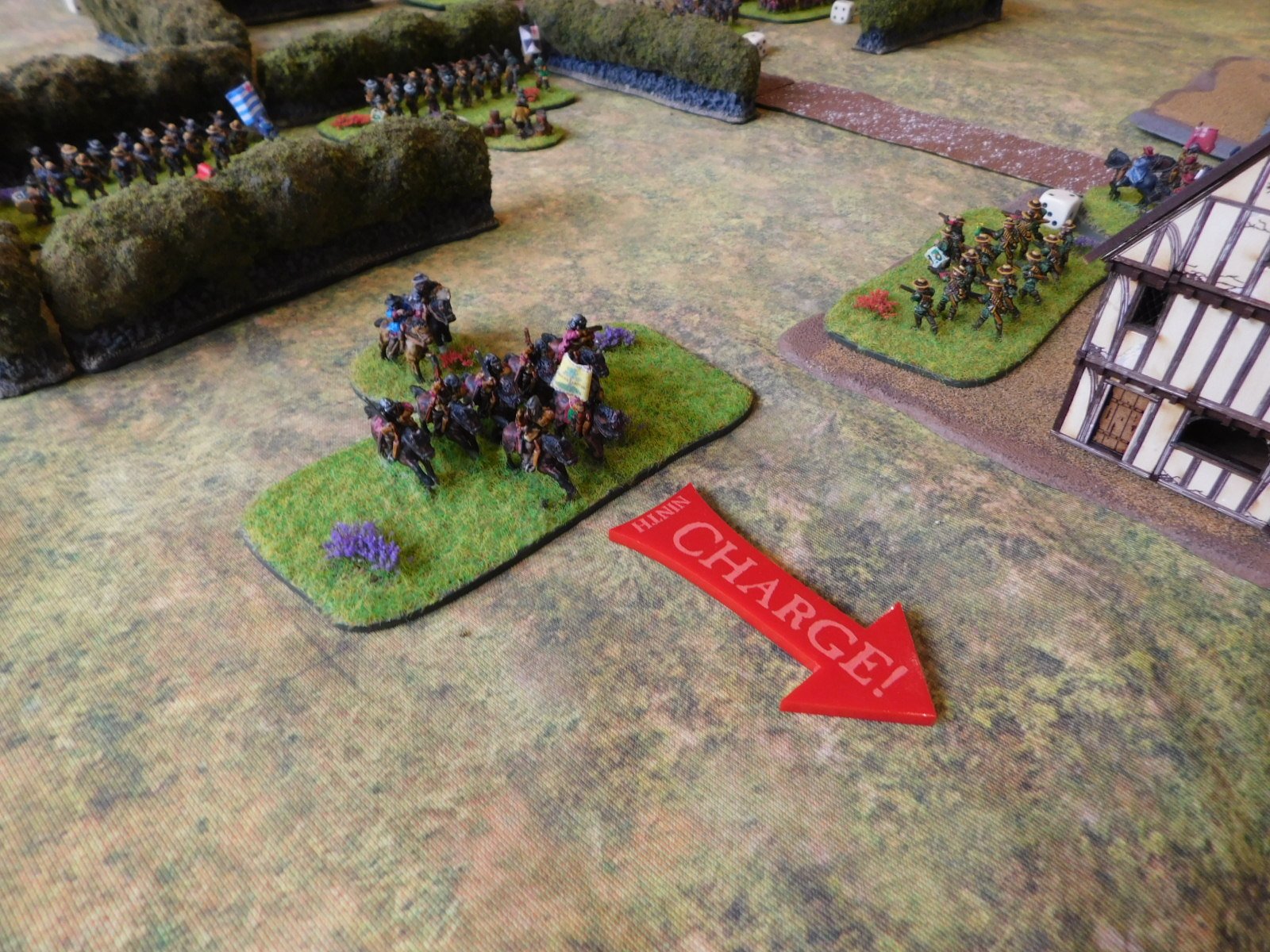
Royalist Cuirassiers see off that retreating Roundhead cavalry unit
View fullsize
![Overview]()

Overview
View fullsize
![Staying behind the hedge!]()

Staying behind the hedge!
View fullsize
![Roundheads still waiting for the Royalists]()

Roundheads still waiting for the Royalists
View fullsize
![Forlorn Hope finally overcome, the Royalists move forward]()

Forlorn Hope finally overcome, the Royalists move forward
View fullsize
![The Roundhead left wing is crumbling]()

The Roundhead left wing is crumbling
View fullsize
![Another hedgehog!]()

Another hedgehog!
View fullsize
![The end of the battle]()

The end of the battle
So a win for the Royalists, and for Rob in his first game.








